
John Baldessari
Heaven and Hell, 1988
Diptych: aquatint, scraping, roulette, and photo-etching
47 1/4 x 31 1/2 inches (120 x 80 cm), each
Edition of 45 + proofs
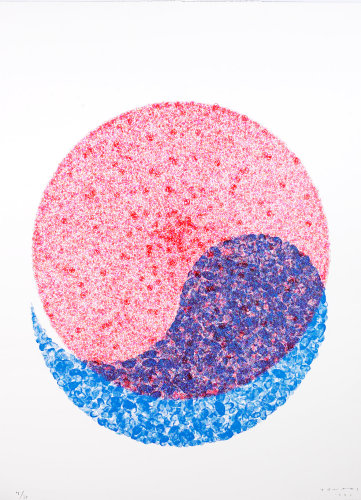
Yanagi Yukinori, Ying/Yang from the porfolio Hinomaru, 1991
This exhibition of Peter Blum Edition prints and portfolios from the 1980s - 2010s by John Baldessari, Huma Bhabha, Louise Bourgeois, Tacita Dean, Eric Fischl, General Idea, Alfredo Jaar, Matthew Day Jackson, Alex Katz, Kimsooja, James Turrell, Yukinori Yanagi, and Robert Zandvliet demonstrates the collaborative process between printer, publisher, and artist resulting in highly unique multiples.
Please click "Inquire" below the artwork details to contact the gallery for more information.
Peter Blum Edition was founded in 1980 in New York and was among the first print publishers to work with a new generation of European and American artists and has since published important editions with several examples included in this presentation. The Peter Blum Edition Archive (1980-1994) was the subject of the exhibition Singular Multiples at the Museum of Fine Arts, Houston in 2006, the largest exhibition ever in North America devoted entirely to printmaking. In 2007, a selection of the Peter Blum Edition portfolios formed the exhibition Scenes and Sequences at the Aargauer Kunsthaus in Aarau, Switzerland.
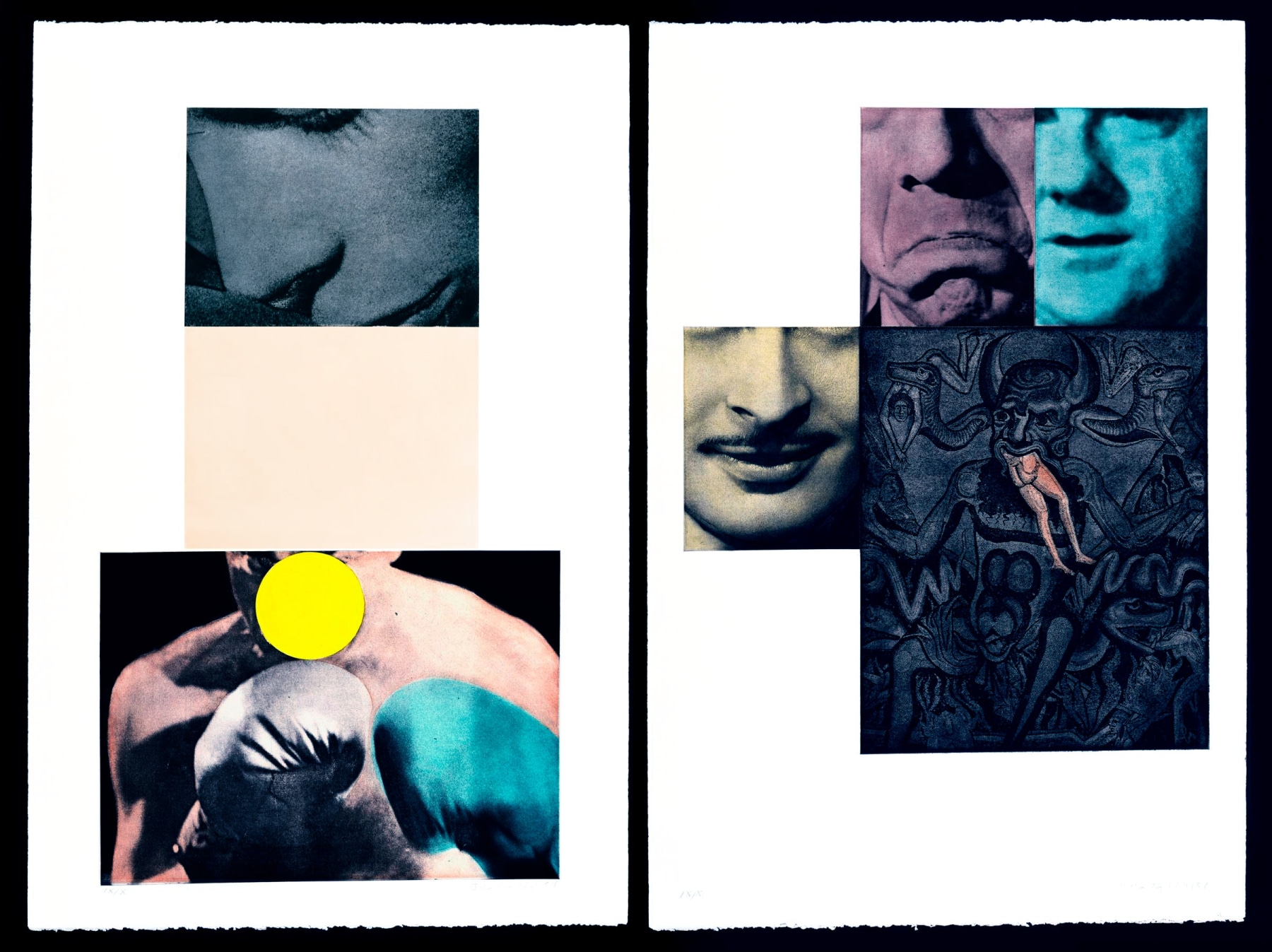
John Baldessari
Heaven and Hell, 1988
Diptych: aquatint, scraping, roulette, and photo-etching
47 1/4 x 31 1/2 inches (120 x 80 cm), each
Edition of 45 + proofs
Inquire
Heaven and Hell consists of two color etchings depicting the two realms of the title. Heaven, in Baldessari's hands, is evoked by a pair of close-up rectangular-format images: one a grainy photographic detail of a woman's face, the other a photograph of a boxer's torso and gloves. An off-white rectangle connects these two images. The Hell etching is centered on a large detail from the thirteenth-century mosaic of the Last Judgement on the ceiling of the Baptistry in Florence. It shows the horned Devil with a man's unclothed legs protruding from his mouth. The sinner's legs are tinted a pale orange, while the rest of the mosaic, designed by Coppo di Marcovaldo, is in black and white. Flanking the mosaic detail at top and left are photographic close-ups of three men's faces, cropped so that their eyes aren't visible. Each man's face is tinted a different tone, and their expressions range from slight smile to deep scowl. One sports a thin mustache that evokes 1930s Hollywood films. Perhaps what's most interesting about this pair of prints is that Baldessari resorts to a piece of conventional Christian iconography for his depiction of Hell, while he offers a more personal vision of Heaven. The presence of the Coppo di Marcovaldo mosaic is also noteworthy because it is one of the few non-photography-based images in Baldessari's oeuvre.
-Raphael Rubinstein
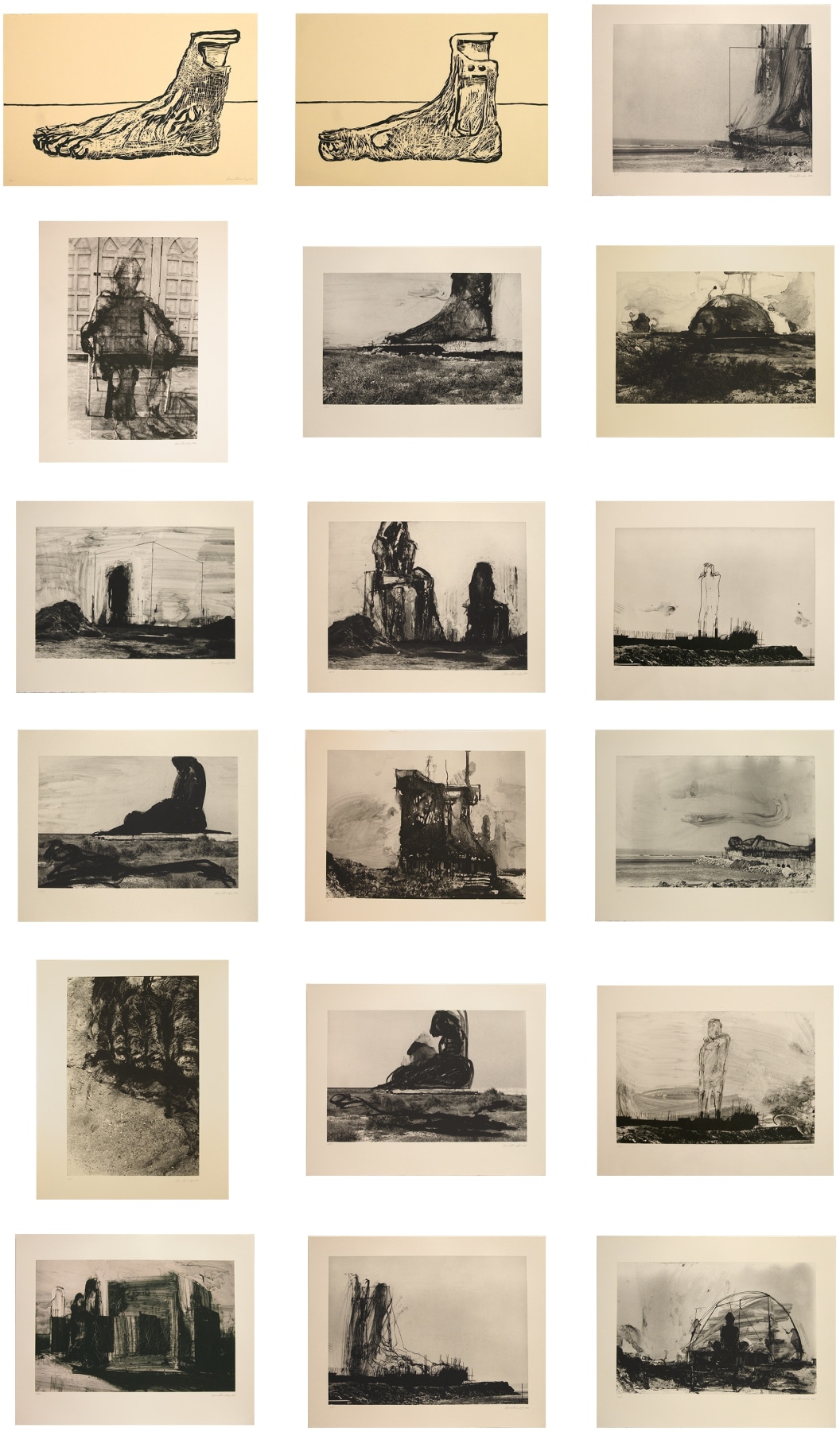
Huma Bhabha
Reconstructions, 2007
Portfolio of 16 photogravures and 2 wood block prints
Photogravures: 29 1/2 x 36 5/8 inches (75 x 93 cm), each
Woodblock prints: 25 3/4 x 34 inches (64.5 x 96.5 cm), each
Edition of 35 + proofs
Inquire
Although Huma Bhabha originally trained in printmaking and painting, she is best known for her figurative sculptures in cork, clay, Styrofoam, wire mesh, and other materials. In fact, Reconstructions is Bhabha’s first series of prints. To make these sixteen images, she “took lots of black-and-white photographs, mostly of stalled construction sites and desert landscapes near the sea” during a trip back to her native Pakistan. According to the artist, she then “made enlargements and began drawing on them with pen or brush and India ink. I started out with feet, which in the context of the photographs looked enormous—as though they belonged to giants or were close-ups of monumental sculpture. But I also made drawings that showed figures in architectural settings or reclining in barren landscapes, as well as drawings that were more abstract.” Since completing work on Reconstructions, Bhabha has gone on to develop an entire body of work based in this process of drawing over photographs.
Feet—like those that appear in many of the prints in Reconstructions—are a recurring motif in Bhabha’s work. When asked in an interview about their frequent appearance in her work, the artist replied: “Three images come immediately to mind: the advancing feet of kouroi, a simple step that signified movement and a major advance for figurative sculpture; the painting of van Gogh’s shoes, which I’ve loved and tried to emulate since I was young; and a memory of a movie from years ago, in which one of the characters was blown up, leaving only a pair of sneakers.”
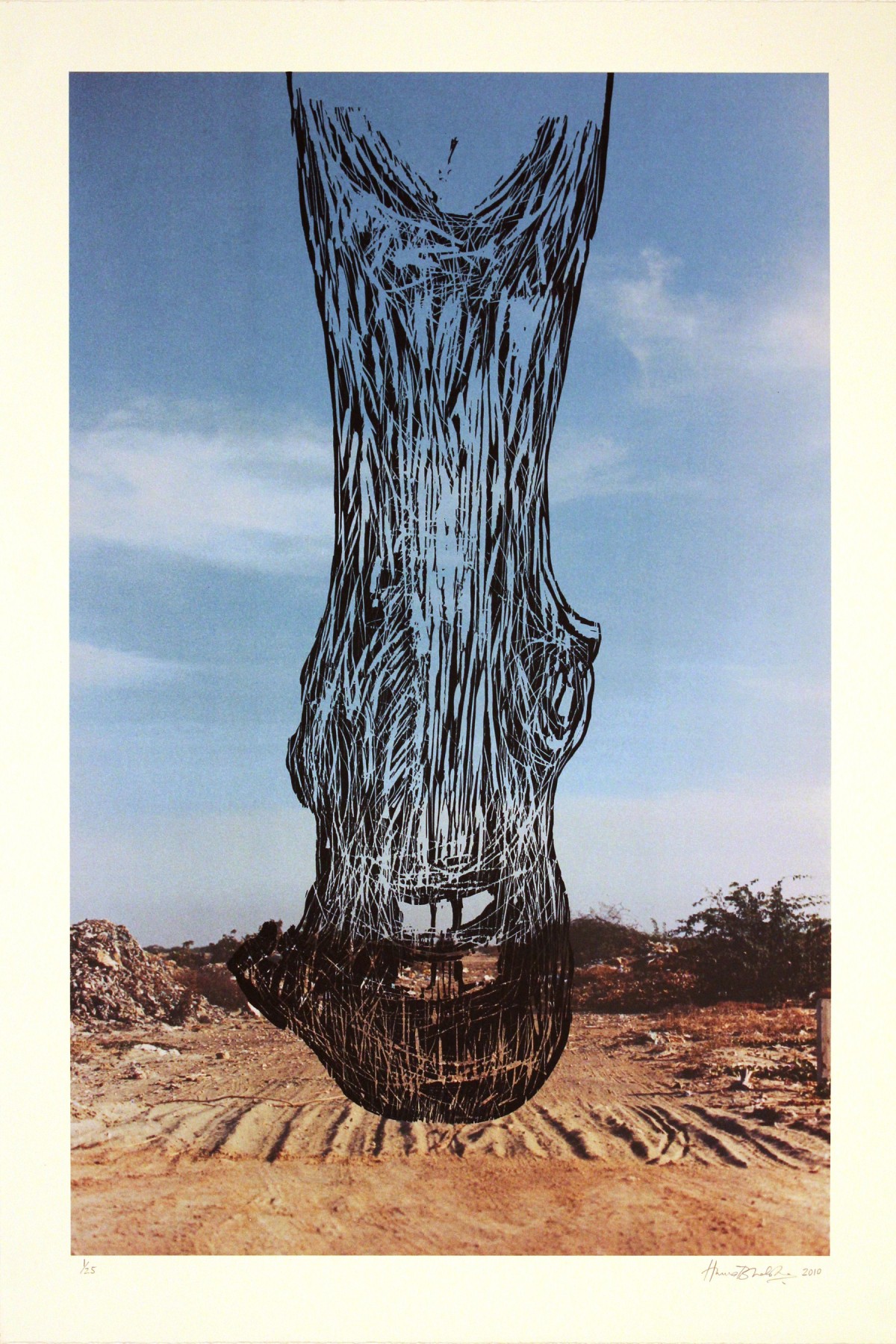
Huma Bhabha
Untitled, 2010
Woodcut over lithograph
38 1/2 x 26 inches (97.8 x 66 cm)
Edition of 25 + proofs
Inquire
One of the most recognized motifs in Huma Bhabha’s work is the foot. When asked in an interview about their frequent appearance in her work, Bhabha replied: “Three images come immediately to mind: the advancing feet of kouroi, a simple step that signified movement and a major advance for figurative sculpture; the painting of van Gogh’s shoes, which I’ve loved and tried to emulate since I was young; and a memory of a movie from years ago, in which one of the characters was blown up, leaving only a pair of sneakers.”
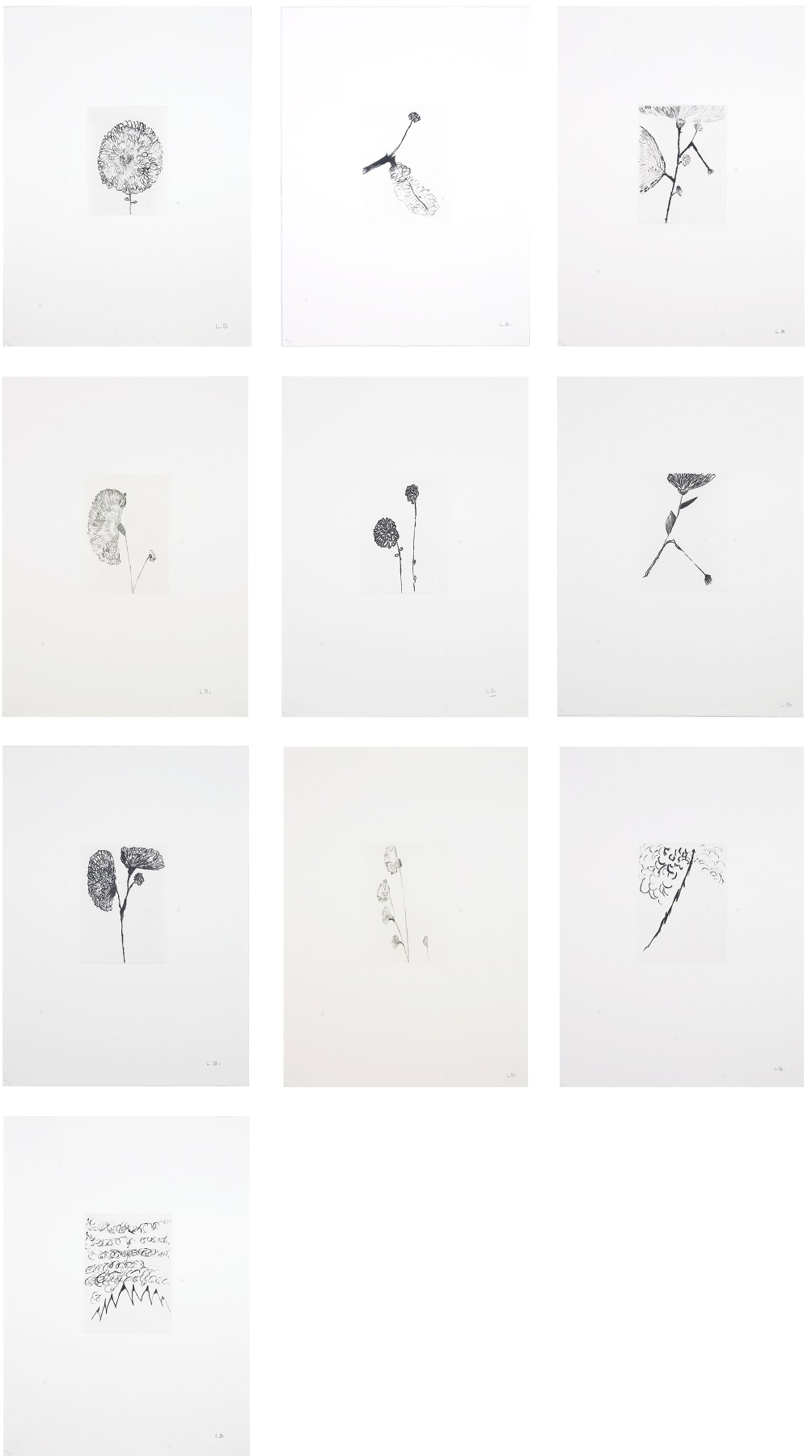
Louise Bourgeois
Etchings for Homely Girl, A Life, 1992
Portfolio of 10 drypoints
21 1/2 x 15 inches (54.61 x 38.1 cm), each
Edition of 44 + proofs
Inquire
“While looking with Bourgeois at the book Portraits, a collection of photographs by Arthur Miller's wife Inge Morath that included a portrait of Bourgeois, I had the idea of bringing the author and the artist together. I proposed a collaborative project, which appealed to both. For Homely Girl, A Life, Bourgeois provided poignant illustrations that all respond to Miller’s short story of a romance between a girl and a blind man. In addition to the portfolio, Bourgeois used the same etchings for a limited edition book that includes the text by Miller.”
-Peter Blum
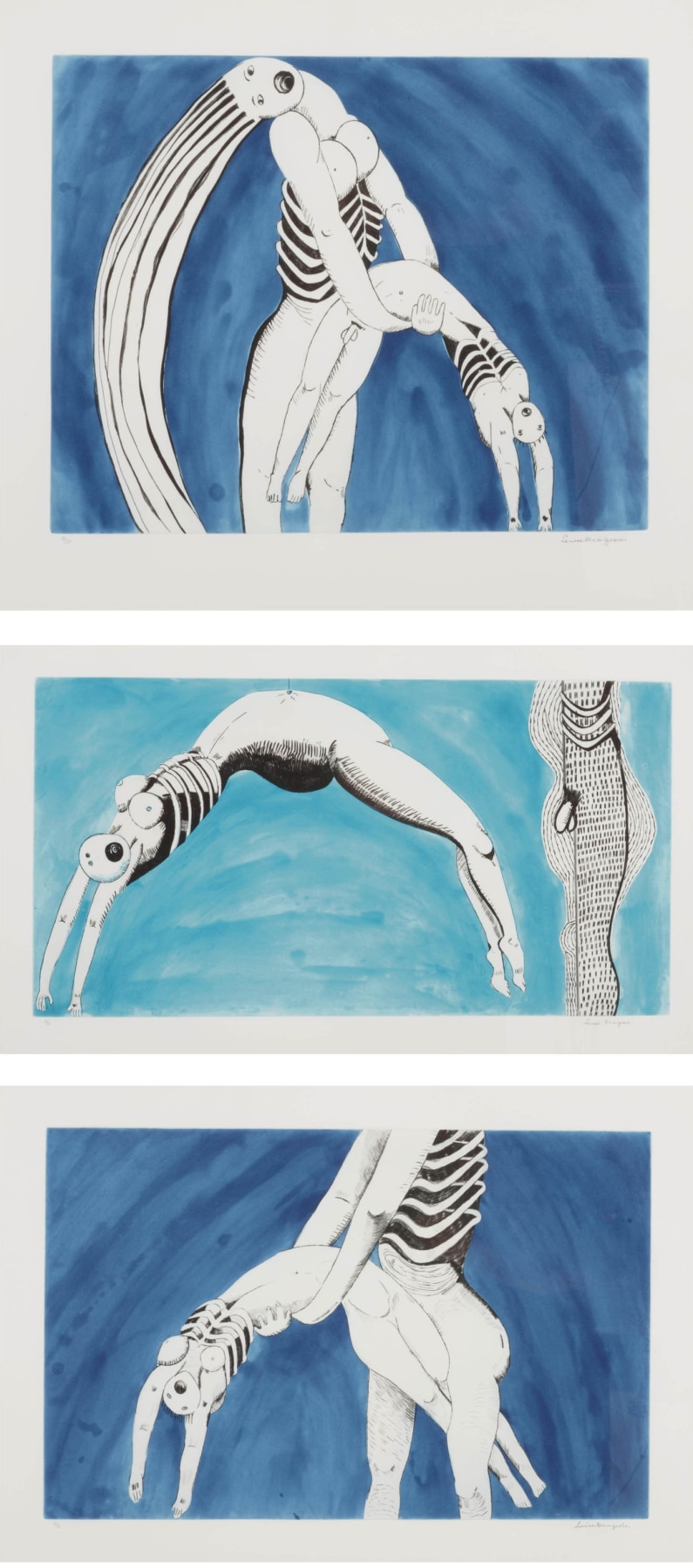
Louise Bourgeois
Triptych for the Red Room, 1994
3 aquatints, drypoints, and engravings
Sheet sizes vary
Edition of 30 + proofs
Inquire
Triptych for the Red Rooms consists of three panels that each depict a pair of nude male and female figures whose bodies interact and contort in unusual poses. This triptych was created to accompany a pair of room installations titled The Red Rooms, 1994 which are examples of what Bourgeois called her ‘cells’, created by combining salvaged architectural material, found objects and the artist’s own sculptural works. The ambiguity of the cells has a bearing on Triptych for the Red Room, which can be understood to depict scenes of fear and pain or of sexual release. The format of the triptych also instils the work with pseudo-religious and ritualistic overtones. One figure in each panel adopts an arc-shaped pose, which may serve as a visual shorthand for hysteria, a condition which fascinated Bourgeois. Hysteria was, historically, thought to solely effect women and to derive from problems in the uterus and became a subject of particular interest to psychoanalysts such as Sigmund Freud, forming the basis for some of his writing.
-Allan Madden
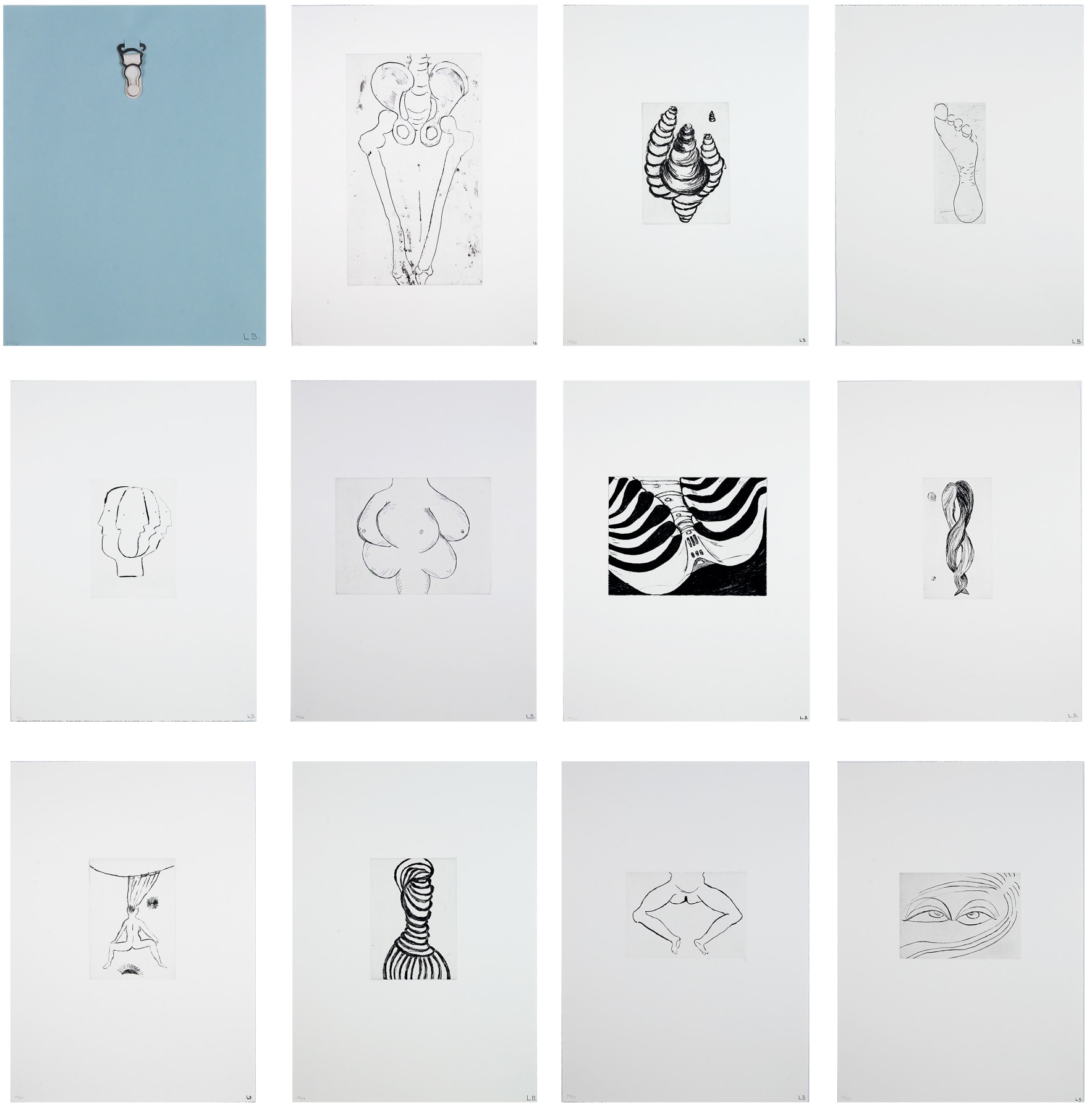
Louise Bourgeois
Anatomy, 1989-90
Portfolio of 11 etchings and drypoints with 1 multiple
19 1/2 x 14 inches (49.53 x 35.56 cm), each
Edition of 44 + proofs
Inquire
"These [prints] are feather thoughts. They come slowly to you... it is something passive, not active. They occur to you... you have to respond. They are like notes... they are indispensable. If you don't take notes, everything is forgotten. Little by little, the notes build up and become final statements... that happens finally in sculpture."
-Louise Bourgeois
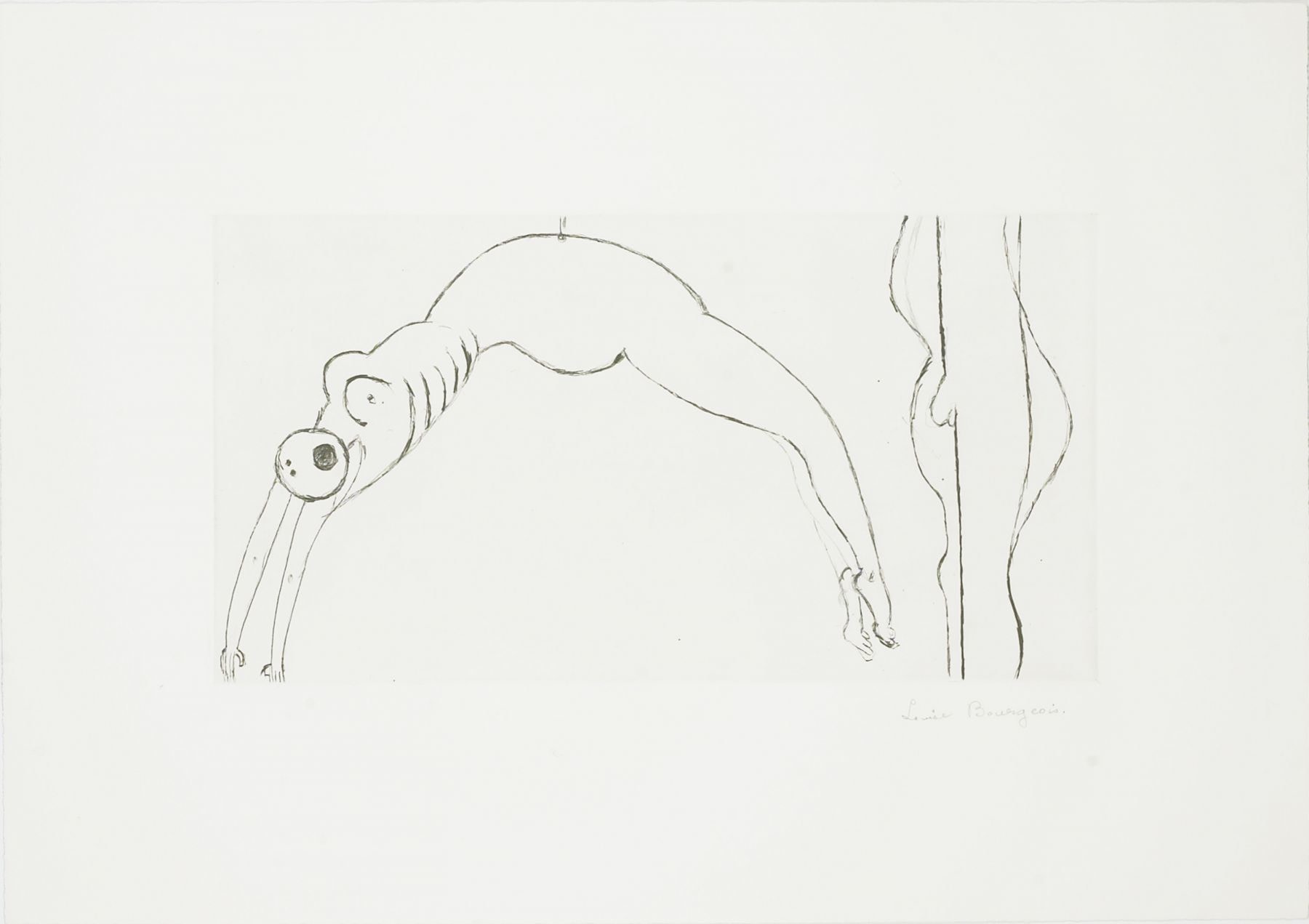
Louise Bourgeois
Arched Figure, 1993
Drypoint
15 5/8 x 22 inches (39.69 x 55.88 cm)
Edition of 50 + proofs
Inquire
"You can tell by the mouth... she is obviously hysterical. This is the child threatening to commit suicide. The couple is at the right. It is called, 'You better shape up because I can't take it anymore.' ... But, in defense of the parent... talking as a parent... you must let the chips fall where they may. If you do things to the best of your ability, you cannot be responsible... your intentions were good."
-Louise Bourgeois
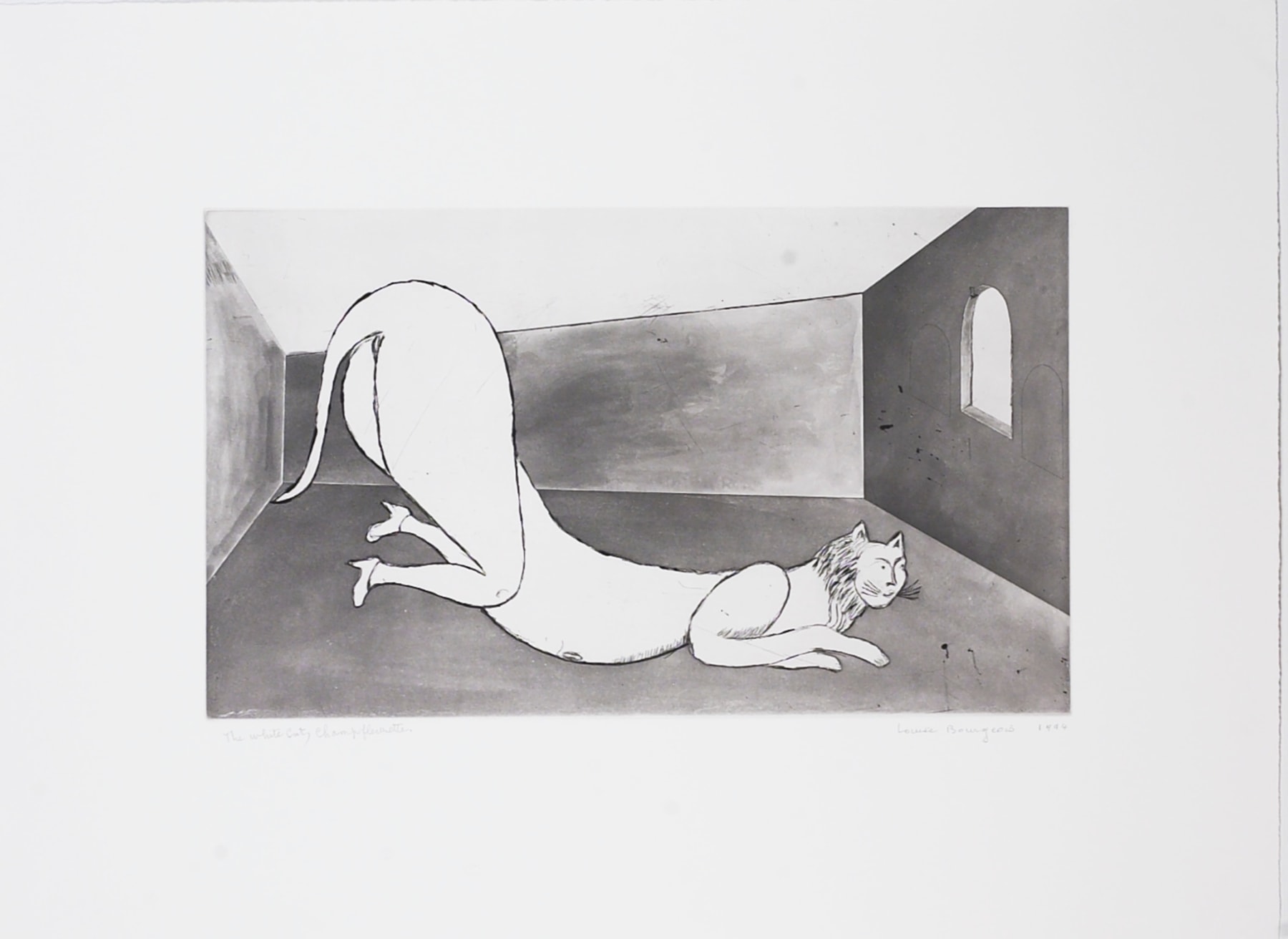
Louise Bourgeois
Champfleurette, the White Cat, 1994
Drypoint, etching, and aquatint
18 1/2 x 25 inches (46.99 x 63.5 cm)
Edition of 22 + proofs
Inquire
In the 1950s, when Louise Bourgeois was living with her husband and children in an apartment on 18th Street in New York City, the family had two cats: Champfleurette and Tyger.
"This is a subject which is recurrent. There is a kind of disassociation between what the girl thinks... that is, what she wishes... and what she appears to be. What she wishes is to be a goody-goody... but the document reveals that her deeper mind is on something completely different!What you are and what you are not are intertwined. But don't worry about her... even if there are several facets of herself... she is still whole... she can handle that without breaking. She accepts herself... she doesn't know that she is ridiculous. This implies a very strong will... when someone is subject to terrific pulls in many directions but does not break. It is an ideal portrait... it is an ambition.The charm items are the hair and the high heels... and also, her nails are done!
-Louise Bourgeois

Louise Bourgeois
Dismemberment, 1994
Drypoint and roulette
20 1/2 x 15 inches (52.1 x 38.1 cm)
Edition of 44 + proofs
Inquire
"This [Dismemberment] is a self-portrait as a helpless, defenseless woman. She has no arms... she is like the harmless women in sculpture. The protecting hand has been cut off. Maybe women are just poor creatures... there is always the fear of being inadequate... of not being able to take care of oneself. It is a permanent feeling. There is the need to defend oneself... then she would be afraid for the children. I always felt that I could not defend myself because I could not understand what motivates people... I still feel that way."
-Louise Bourgeois
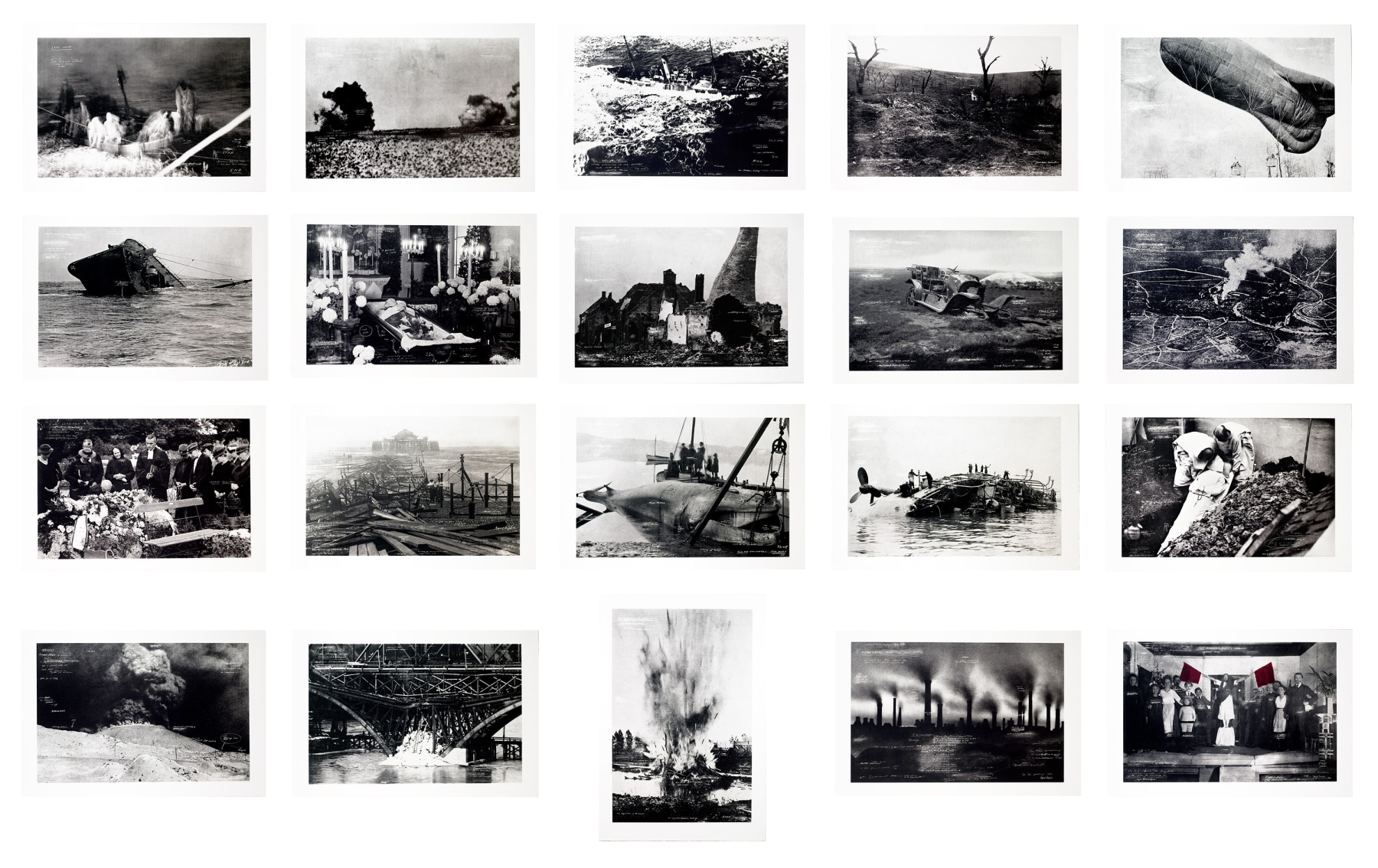
Tacita Dean
The Russian Ending, 2001
Portfolio of 20 photogravure etchings
21 x 31 inches (54 x 79.4 cm), each
Edition of 35 + proofs
Inquire
Each image in the portfolio is derived from a postcard collected by Tacita Dean in her visits to European flea markets. Most of the images depict accidents and disasters, both man-made and natural. Superimposed on each image are white handwritten notes in the style of film directions with instructions for lighting, sound and camera movements, suggesting that the each picture is the working note for a film. The title of the series is taken from a convention in the early years of the Danish film industry when each film was produced in two versions, one with a happy ending for the American market, the other with a tragic ending for Russian audiences.
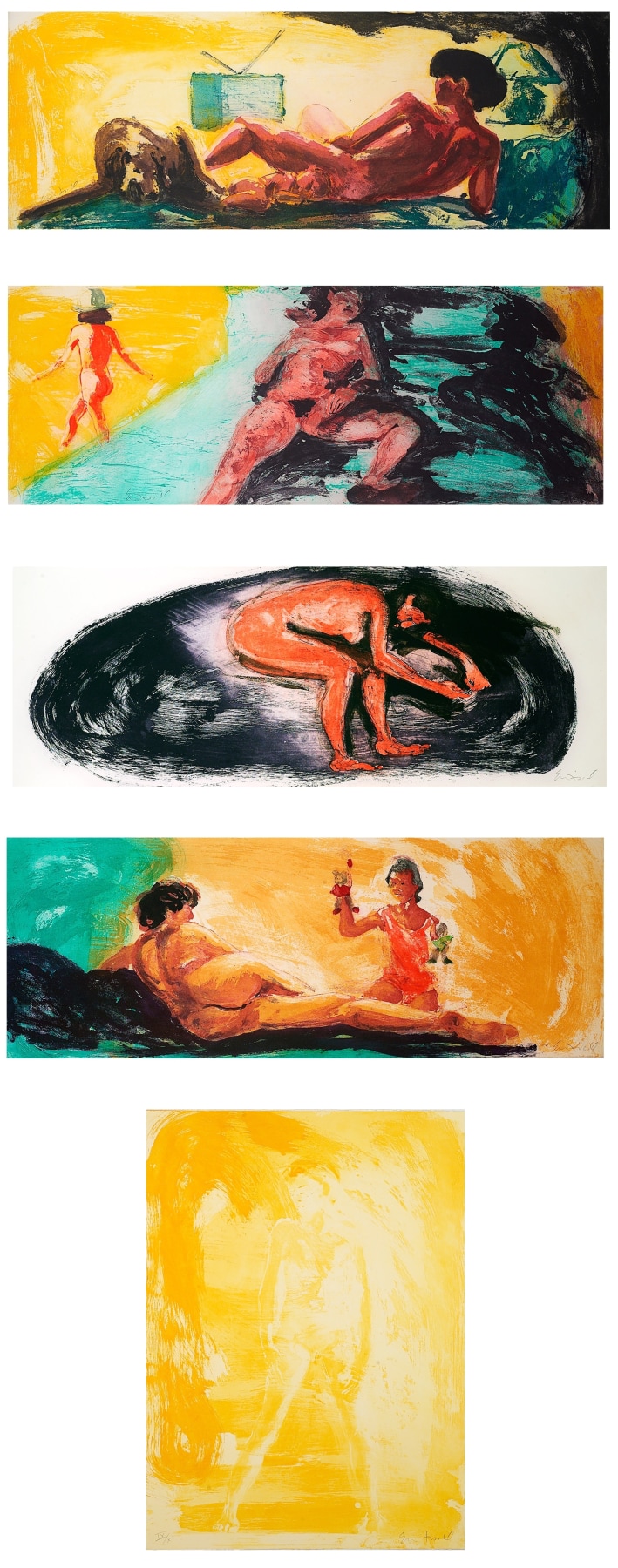
Eric Fischl
Floating Islands, 1985
Portfolio of 5 aquatint, sugar lift, drypoint, and scraping prints
4 prints: 11 x 31 inches (29.5 x 80.5 cm), each; 1 print: 22 x 16 inches (58.4 x 42.5 cm)
Edition of 45 + proofs
Inquire
"The images in Floating Islands show Fischl's desire to take on art-historical models, while keeping his imagery firmly in a twentieth-century setting. One print of a nude recalls Courbet's Origin of the World while a contemporary-looking figure in a hat cavorts on a beach nearby. Another image, of a nude woman being entertained by a child doing a puppet show (this is also the subject for Puppet-Tears), brings to mind Velazquez's Rokeby Venus. Fischl clearly wants the viewer to make these connections and, with them, the concomitant comparisons. He cares less about how his own art will fare in such comparison than about having the freedom to reference specific art-historical models, simultaneously making the point that contemporary life is every bit as "classical" as that of any other period.
-Vincent Katz
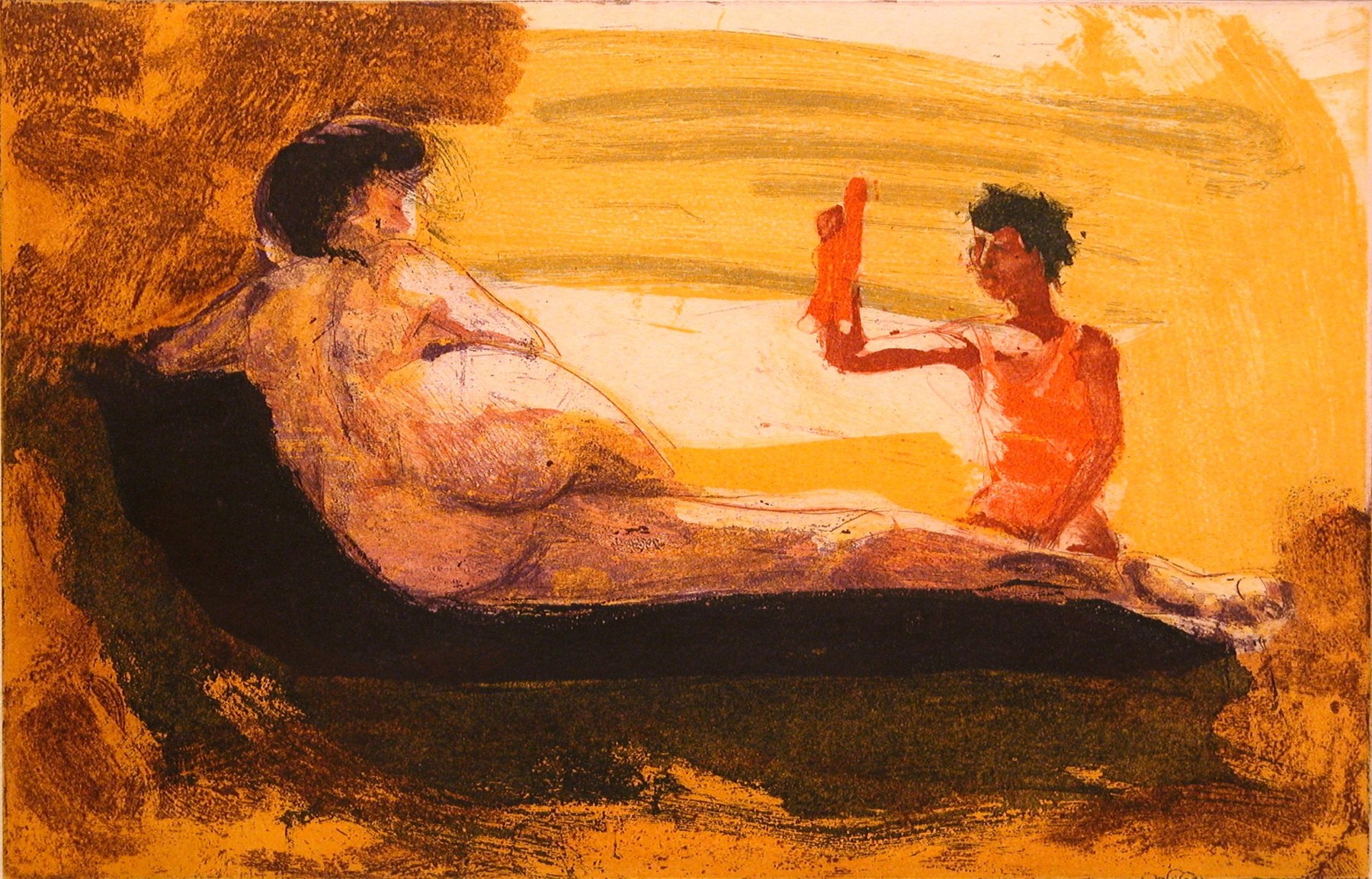
Eric Fischl
Puppet-Tears, 1985
Etching, aquatint, sugar-lift, dry point, and scraping
15 x 12 inches (38 x 31.8 cm)
Edition of 50 + proofs
Inquire
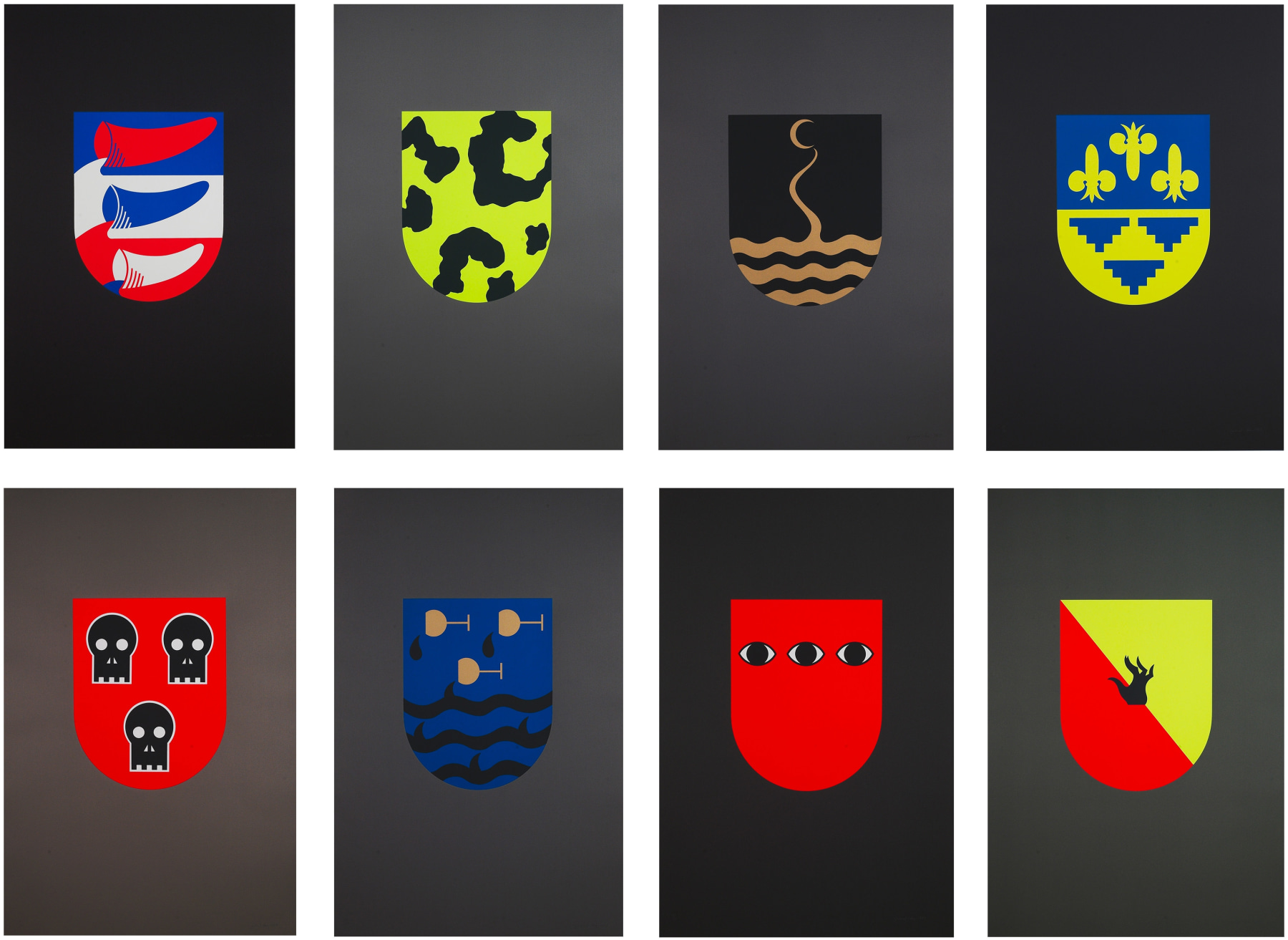
General Idea
Fear Management, 1987
Portfolio of 8 handpainted silkscreens
33 x 22 inches (83.8 x 55.9 cm), each
Edition of 50 + proofs
Inquire
"The portfolio Fear Management was issued at a crucial point, when General Idea turned nearly wholly to AIDS as a subject. One cannot help but read the prints as shifting between two emotional tones, one portentous and the other still playful. The selection in Fear Management of this particular group from the 'Armory' paintings mixes sex and death, to be sure; but, drawing on so much that came before the works although carry on in the wry Dadaist spirit that marked General Idea's earlier work. The prints convey the sense that the artists are taking a vacation from the reality at hand, retrospectively surveying two decades of imagery but hovering on the verge of the unavoidable bad news."
-Faye Hirsch
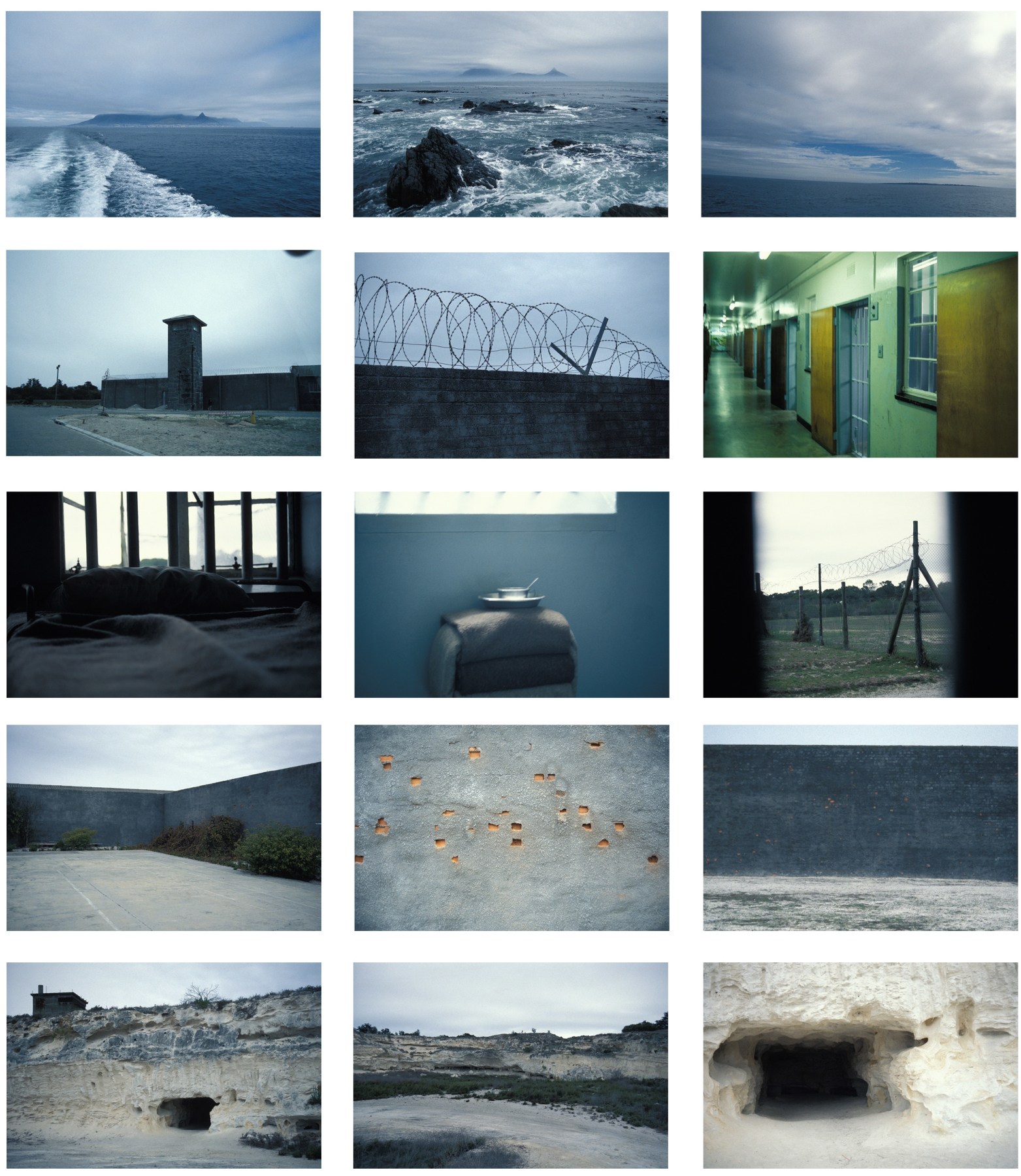
Alfredo Jaar
The Sound of Silence, 2006
Portfolio of 15 pigment prints
20 x 30 inches (50.8 x 76.2 cm), each
Edition of 25 + proofs
Inquire
Cape Town, South Africa, February 11, 1990.
Nelson Mandela is released from prison, after 28 years of brutal treatment by the apartheid regime. The images of his release, broadcast live around the world, show a man squinting into the light as if blinded. More than half of Mandela's sentence was spent on Robben Island, a windswept rock surrounded by the treacherous seas of the Cape of Good Hope. Only seven miles off Cape Town, the island had been used as a maximum security prison for "non-white" men since 1959. Mandela's fellow inmates there included Walter Sisulu, Ahmed Kathrada, and Govan Mbeki, the father of current South African President Thabo Mbeki. Mandela later said that Robben Island was "intended to cripple us so that we should never again have the strength and courage to pursue our ideals."
In the summer of 1964, Mandela and his fellow inmates in the isolation block were chained together and taken to a limestone quarry in the center of the island, where they were put to work breaking rocks and digging lime. The lime was used to turn the island's roads white. At the end of each day, the black men had themselves turned white with limedust. As they worked, the lime reflected the glare of the sun, blinding the prisoners. Their repeated requests for sunglasses to protect their eyes were denied. There are no photographs that show Nelson Mandela weeping on the day he was released from prison. It is said that the blinding light from the lime had taken away his ability to cry.
-David Levi Strauss
Each portfolio includes a bound poem by Edouard Glissant in French with an English translation by Françoise Le Brun:
ROBBEN’S ROCKS HAVE CONFINED THEIR SITE, THE WAVES RELEASED IT, AND THUS WE NOTICE IT.
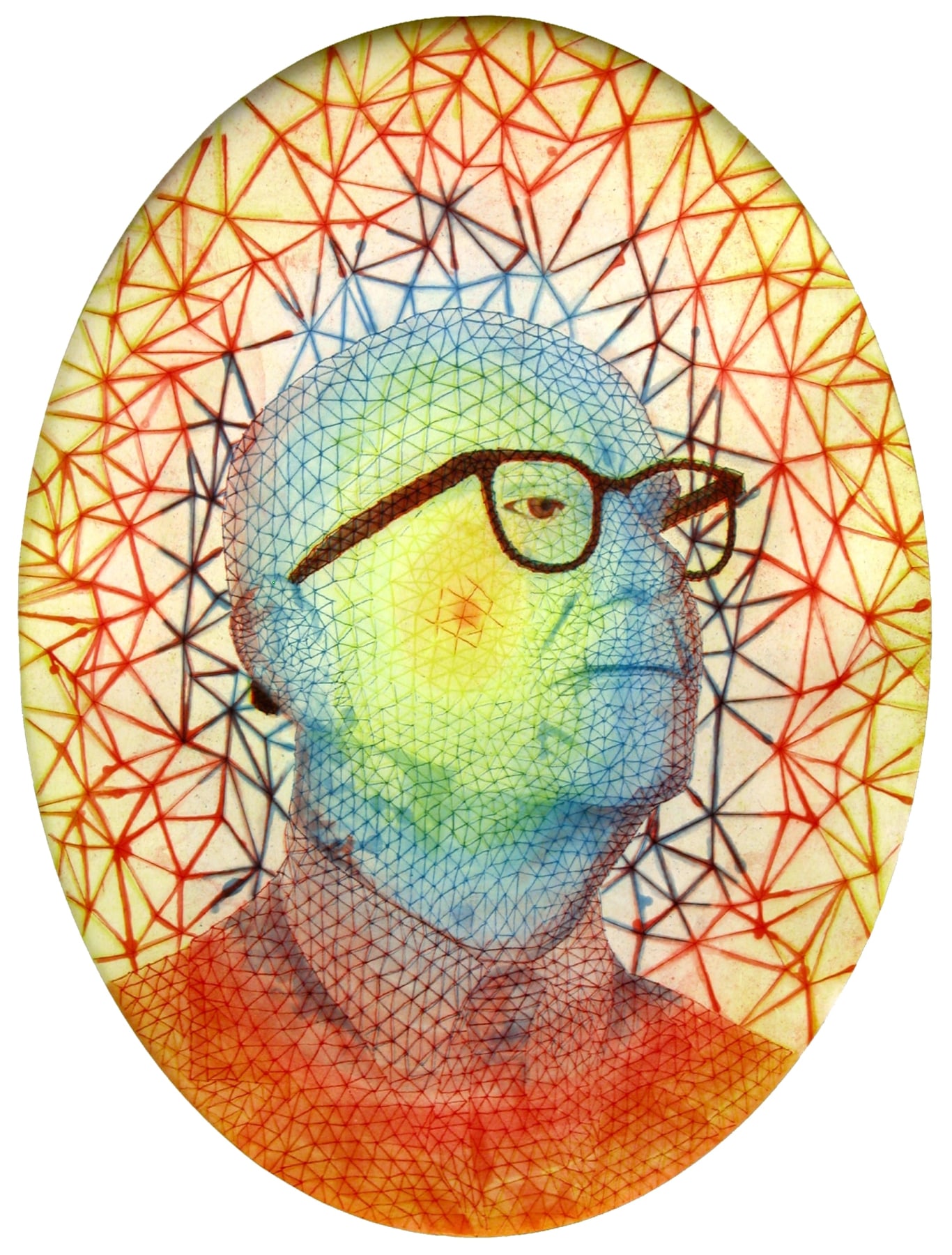
Matthew Day Jackson
Bucky (ROYGBV) from The Dymaxion Series, 2007-08
Intaglio (softground and spitbite) and screenprint
23 3/4 x 17 1/2 inches (60.3 x 44.5 cm)
Edition of 35 + proofs
Inquire
Bucky is a monumental, playful and ultimately complex celebration of the twentieth-century visionary and inventor, Richard Buckminster Fuller. Matthew Day Jackson presents Bucky, as he was nick-named, in a pose that has the iconic impact of Soviet propaganda posters. Jackson often chooses subjects which tap into the complexities and ambiguities of progress and development, as well as the history and mythology of both science and his native United States. That ambiguity is heightened by the background of Bucky, which is divided by the criss-crossing forms that so deliberately invoke Fullers famous geodesic domes and also serves to thrust the rainbow-like range of colors accentuating the emphasis on Fullers role as a visionary.
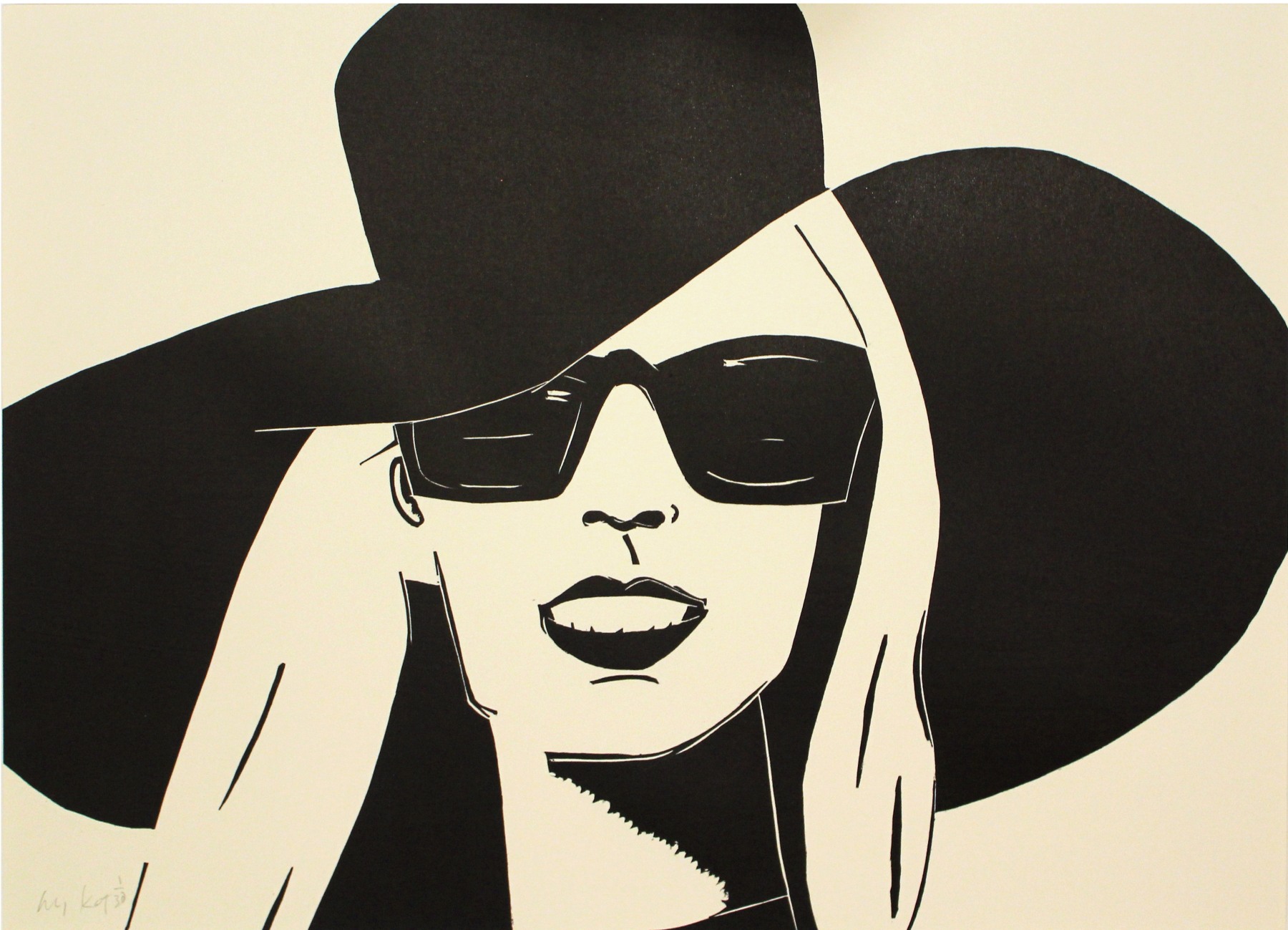
Alex Katz
Nicole, 2011
Woodcut
17 1/8 x 23 3/4 inches (43.5 x 60.3 cm)
Edition of 30 + proofs
Inquire
"Being, culturally, a European, I always had difficulty in understanding what Alex Katz was after. It was through other artists that I went to see Alex and started to look at his work. And I started realizing that, although Alex was somewhat older than most of the artists I had published, he seemed in many ways, to be the youngest in the whole group - in terms of innovation, audacity, and being free in what he was painting. One of the ways for me to get to know artists and their work, to understand them - beyond going to see their work - was to work with them. So I suggested to Alex to do a print project. I did have one specific idea of what I wanted to do with Alex in that first project, and it was to ask him to do woodcuts. One of the reasons to choose the woodcut medium was to pursue something within Alex's work which fascinated me, which had a rougher, more raw, quality than some of the prints he had done, which were much closer to the paintings and other unique work."
-Peter Blum
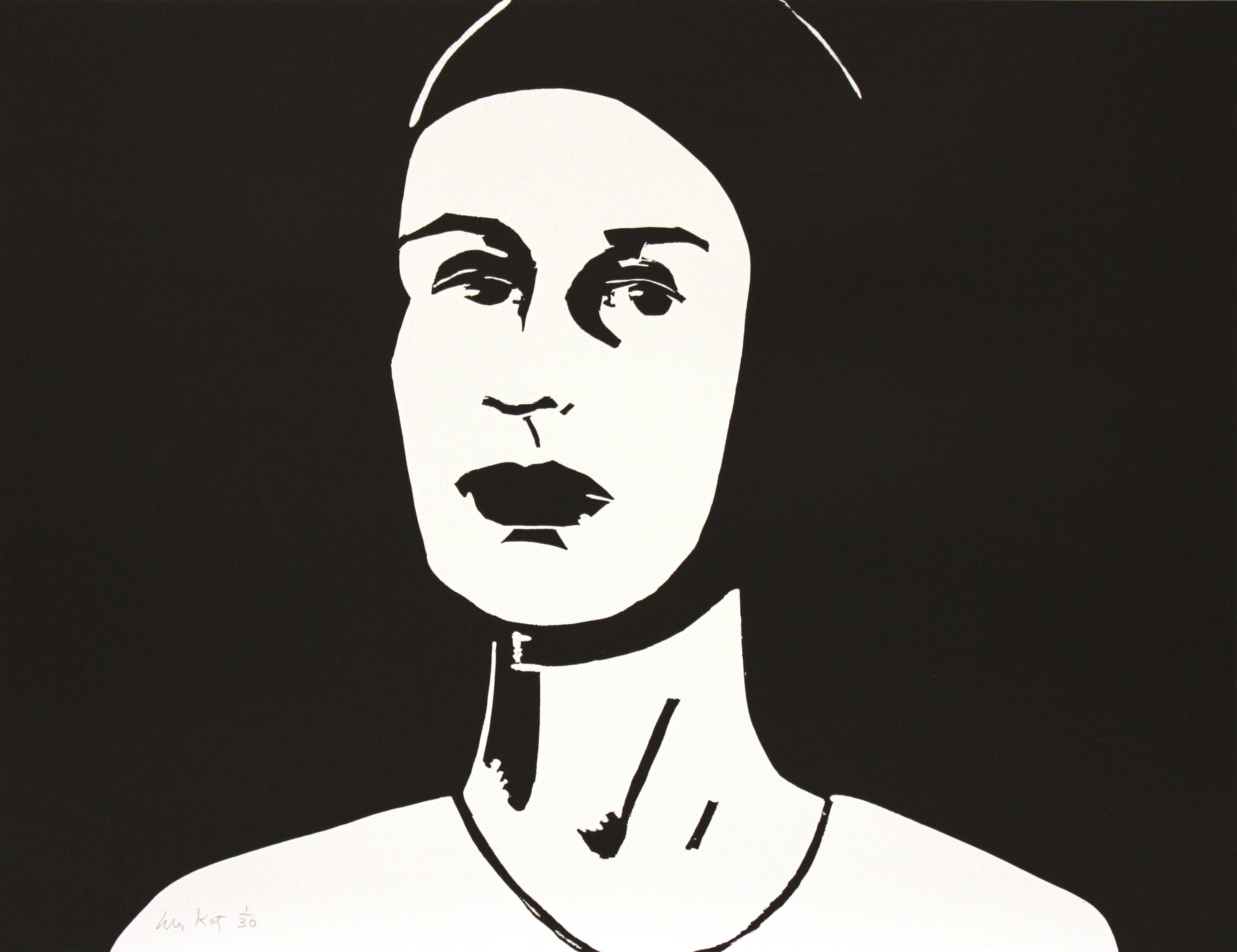
Alex Katz
Black Cap (Ada), 2010
Woodcut
17 x 22 1/4 inches (43.2 x 56.5 cm)
Edition of 30 + proofs
Inquire
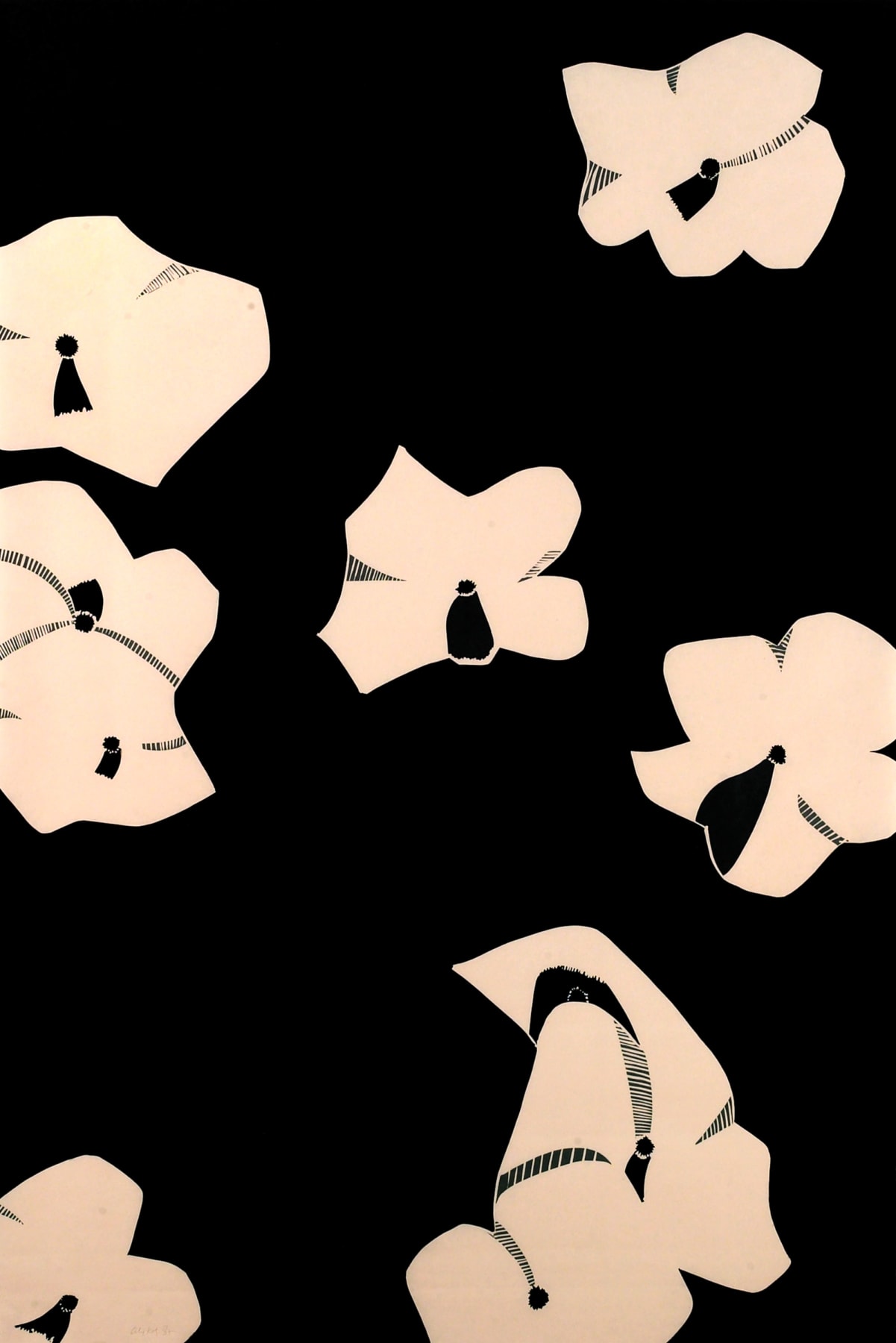
Alex Katz
Impatiens, 2001
Linocut
54 x 36 1/4 inches (137.2 x 92.1 cm)
Edition of 35 + proofs
Inquire
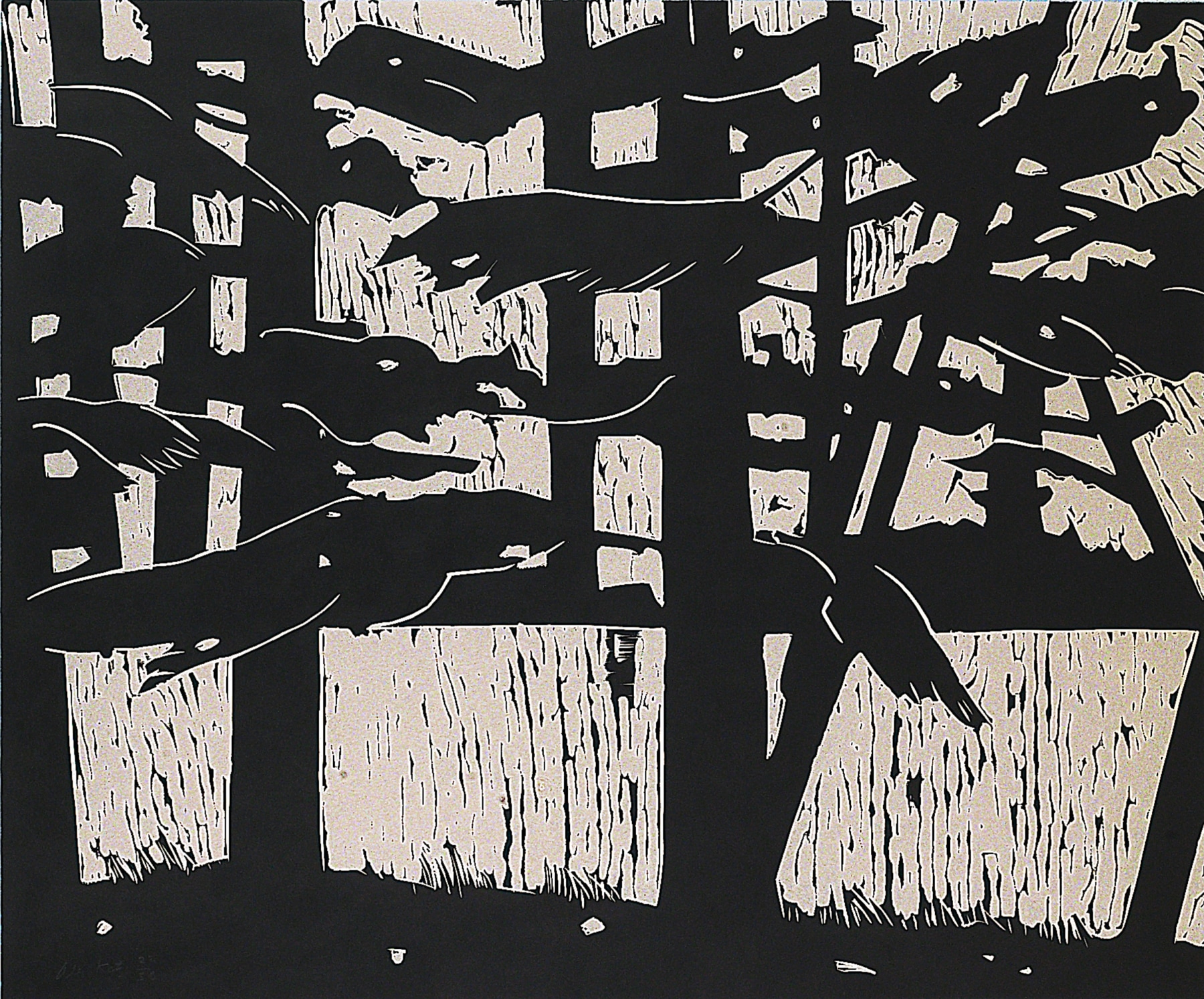
Alex Katz
Pines, 2003
Linocut
27 5/8 x 33 1/4 inches (70.2 x 84.5 cm)
Edition of 30 + proofs
Inquire

Alex Katz
Reflection I, 2010
Etching
18 1/2 x 13 1/2 inches (47 x 34.3 cm)
Edition of 45 + proofs
Inquire

Alex Katz
Untitled (House), 2001
Linocut
Sheet: 16 x 14 inches (42.5 x 35.6 cm)
Edition of 45 + proofs
Inquire
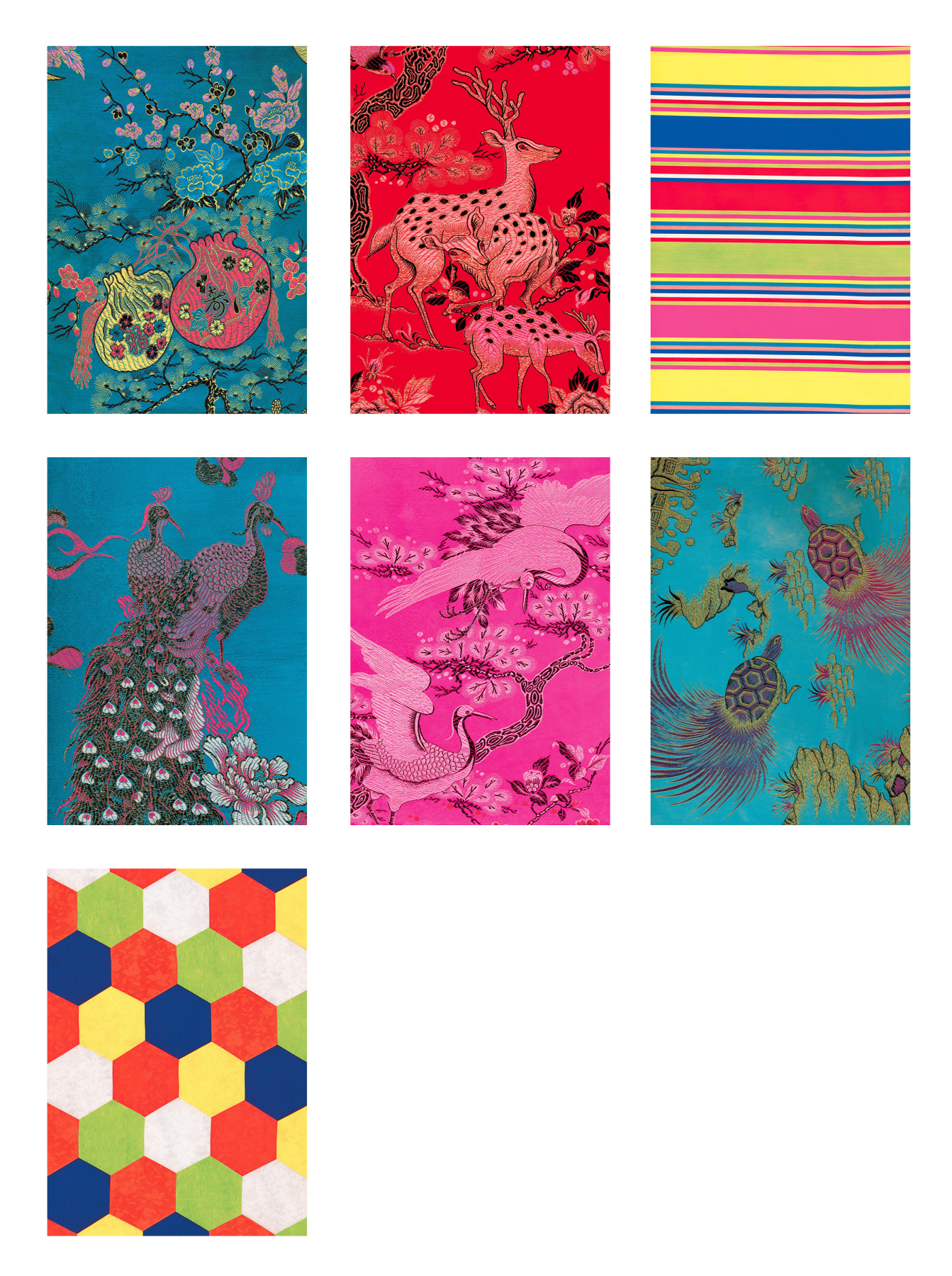
Kimsooja
The Seven Wishes, 2004
Portfolio of 7 Iris prints
45 x 31 1/2 inches (114.3 x 80.01 cm), each
Edition of 20 + proofs
Inquire
Seven Wishes consists of large Iris prints of the fabrics traditionally given to newlyweds in Korea. The images illustrate the wishes for newlyweds at traditional Korean wedding ceremonies, such as purses for prosperity and turtles for longevity. The traditional Korean fabrics, which are a repeated symbol in Kimsooja’s work since the early 1990s, are wedding bedspreads and are also used to wrap newborn babies. At death, they are used to wrap the body for burial.
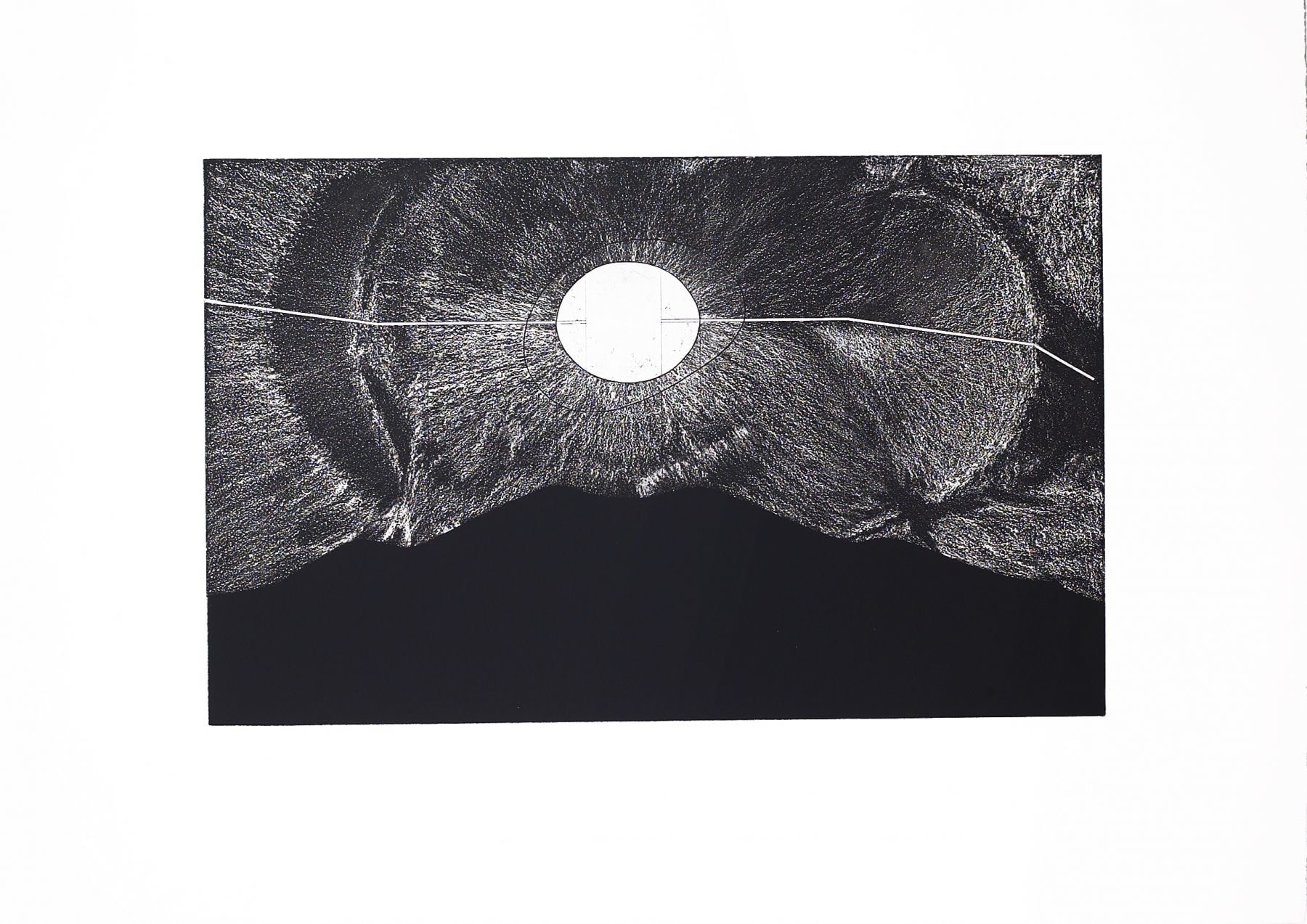
James Turrell
Fumarole from the series Mapping Spaces, 1987
Etching, aquatint, photo-etching, drypoint, and soft-ground
22 x 30 inches (56 x 78 cm)
Edition of 35 + proofs
Inquire
Roden Crater has knowledge in it, and it does something with that knowledge. Environmental events occur; a space lights up. Something happens in there, for a moment, or for a time. It is an eye, something that is itself perceiving. It is a piece that does not end. It is changed by the action of the sun, the moon, the cloud cover, by the day and the season that you are there...and it keeps changing. When you're there, it has visions, qualities and a universe of possibilities.
-James Turrell
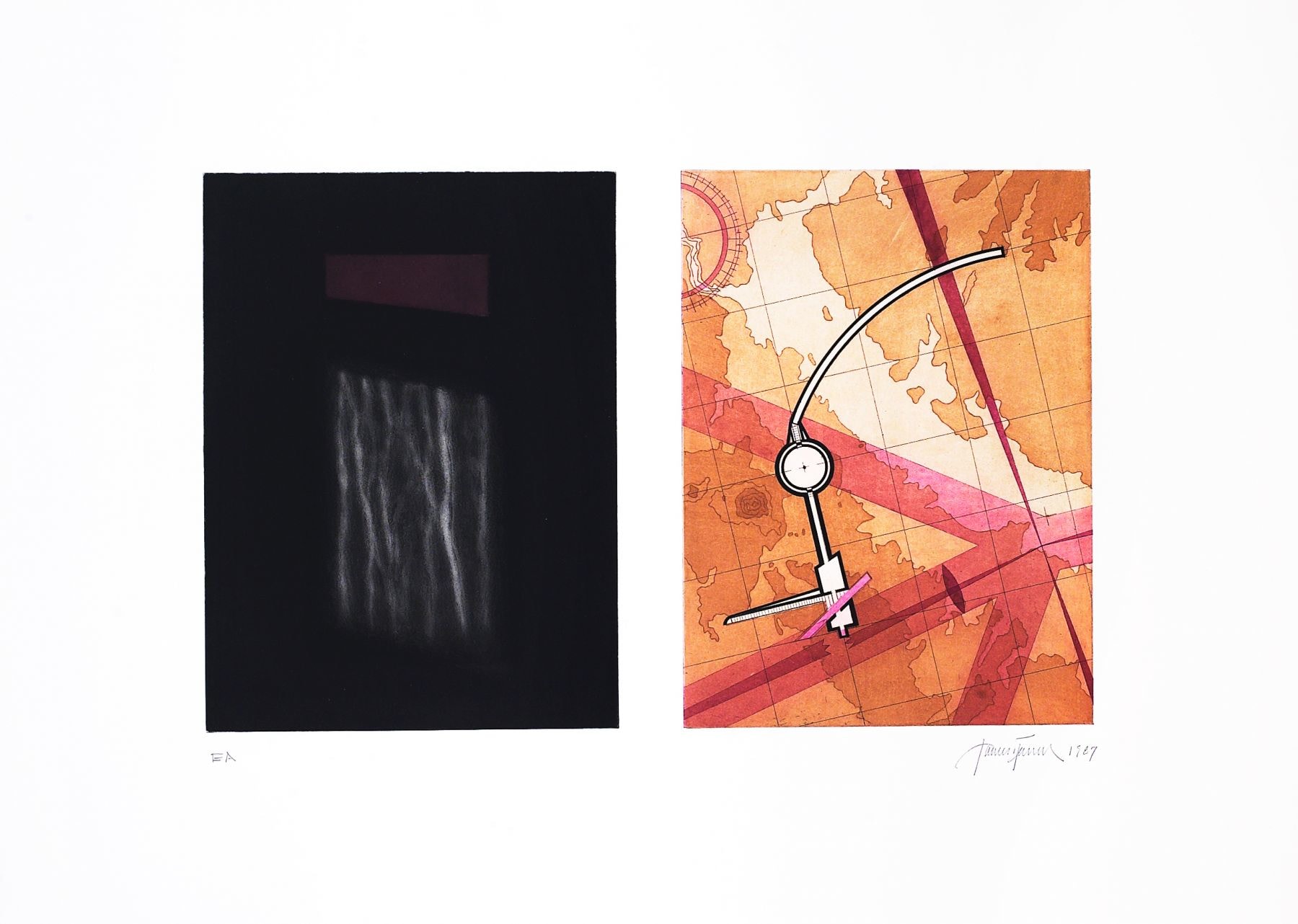
James Turrell
East Chamber from the series Mapping Spaces, 1987
Etching, aquatint, photo-etching, drypoint, and soft-ground
22 x 30 inches (56 x 78 cm)
Edition of 35 + proofs
Inquire
The chamber sheets contrast mysterious, intriguing effects created by light with chartlike renderings of corridors and chambers from quadrants of Roden Crater. One side deals with experience; the other offers a "map" that can guide you to that state.
-Phyllis Tuchman
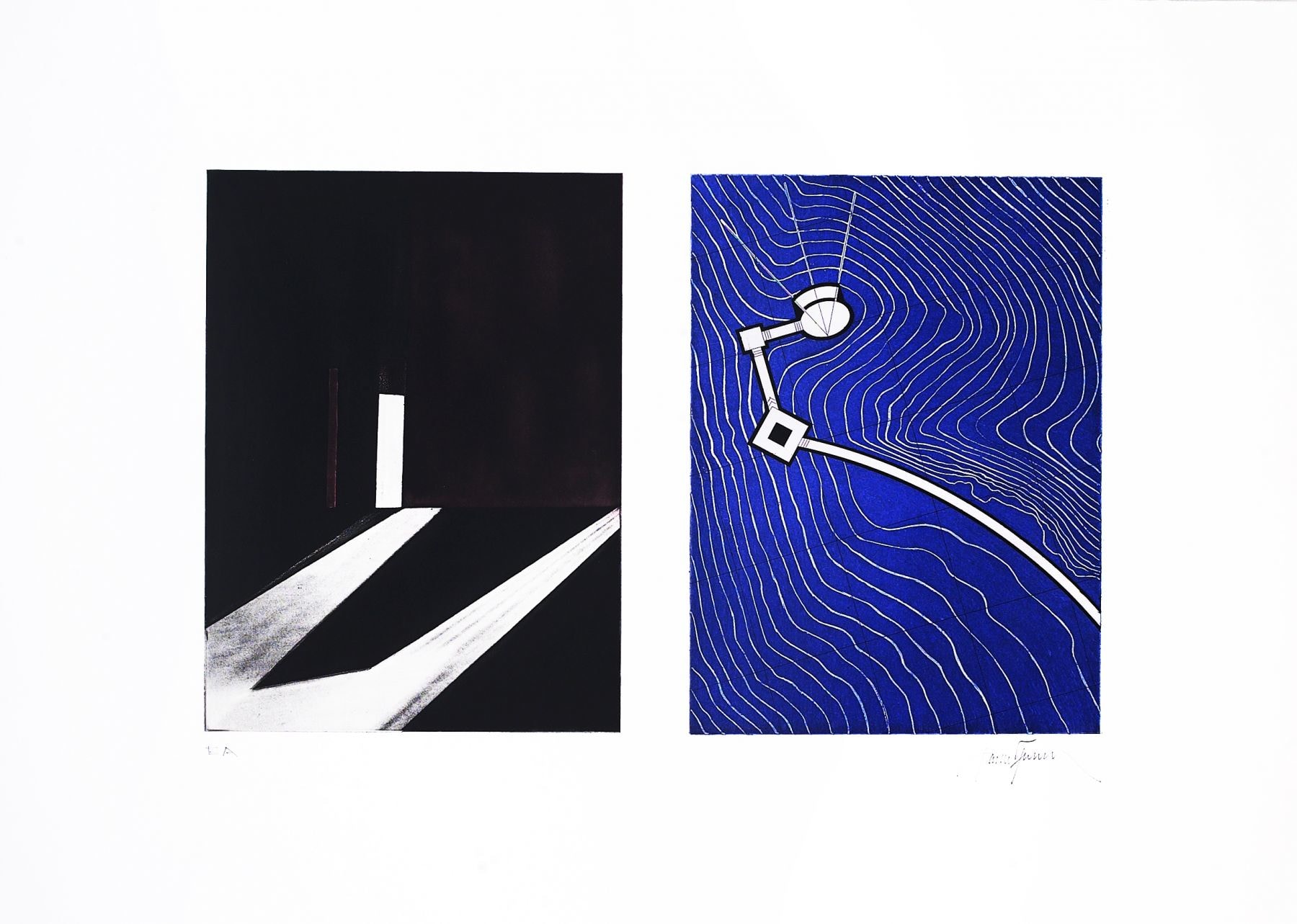
James Turrell
West Chamber from the series Mapping Spaces, 1987
Etching, aquatint, photo-etching, drypoint, and soft-ground
22 x 30 inches (56 x 78 cm)
Edition of 35 + proofs
Inquire
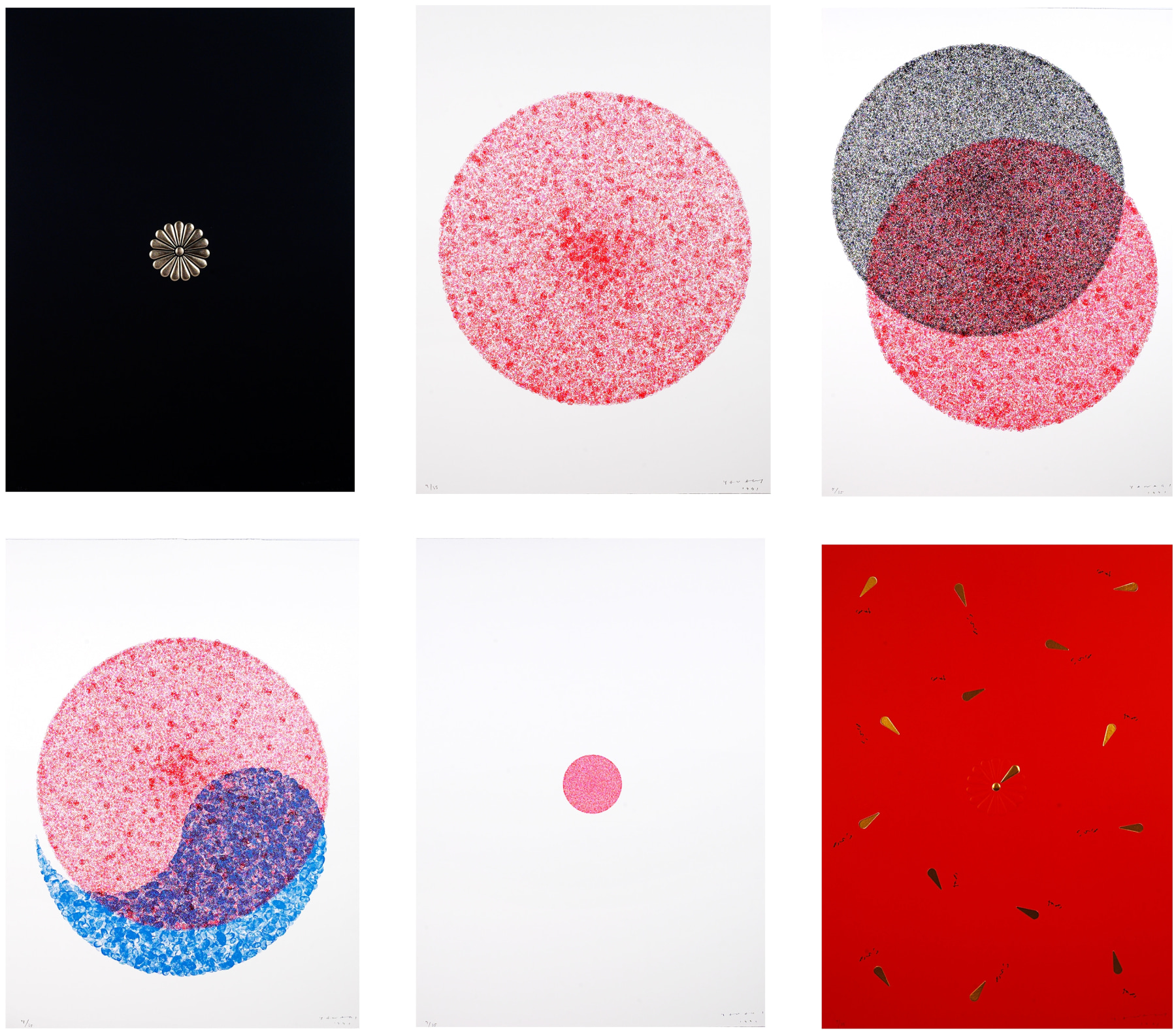
Yukinori Yanagi
Hinomaru,1991
Portfolio of 5 lithographs in colors and 1 embossed print with collage
33 x 24 inches (84 x 61 cm)
Edition of 35 + proofs
Inquire
"The title Hinomaru is translated as 'circle of the sun' in English; it is the name of the Japanese flag and is more commonly known in English as 'the rising sun'. At the same time Yanagi made this portfolio, the display of the Hinomaru was a controversial issue in Japan; it was considered by many to be an unacceptable reference to the military aggression, colonialism and fascism of the past. In 1999, a law was passed making the Hinomaru the official flag of Japan, though not without a great deal of resistance on the part of those who find it coercive.
The first and last prints in the portfolio present the Chrysanthemum motif, associated with the Japanese royal family; it, too is a central image in flags, this time representing the emperor and empress, and it is also, significantly for the prints, the image on the Japanese passports. Yanagi makes of the Chrysanthemum something both precious and ironic; it is embossed in gold on black in the first print (the actual passport is gold on red); in the last, it is red-on-red embossment at the center, with individual collaged gold petals strewn and labeled, in Japanese, in phrases that translate as 's/he loves me, s/he loves me not'."
-Faye Hirsch
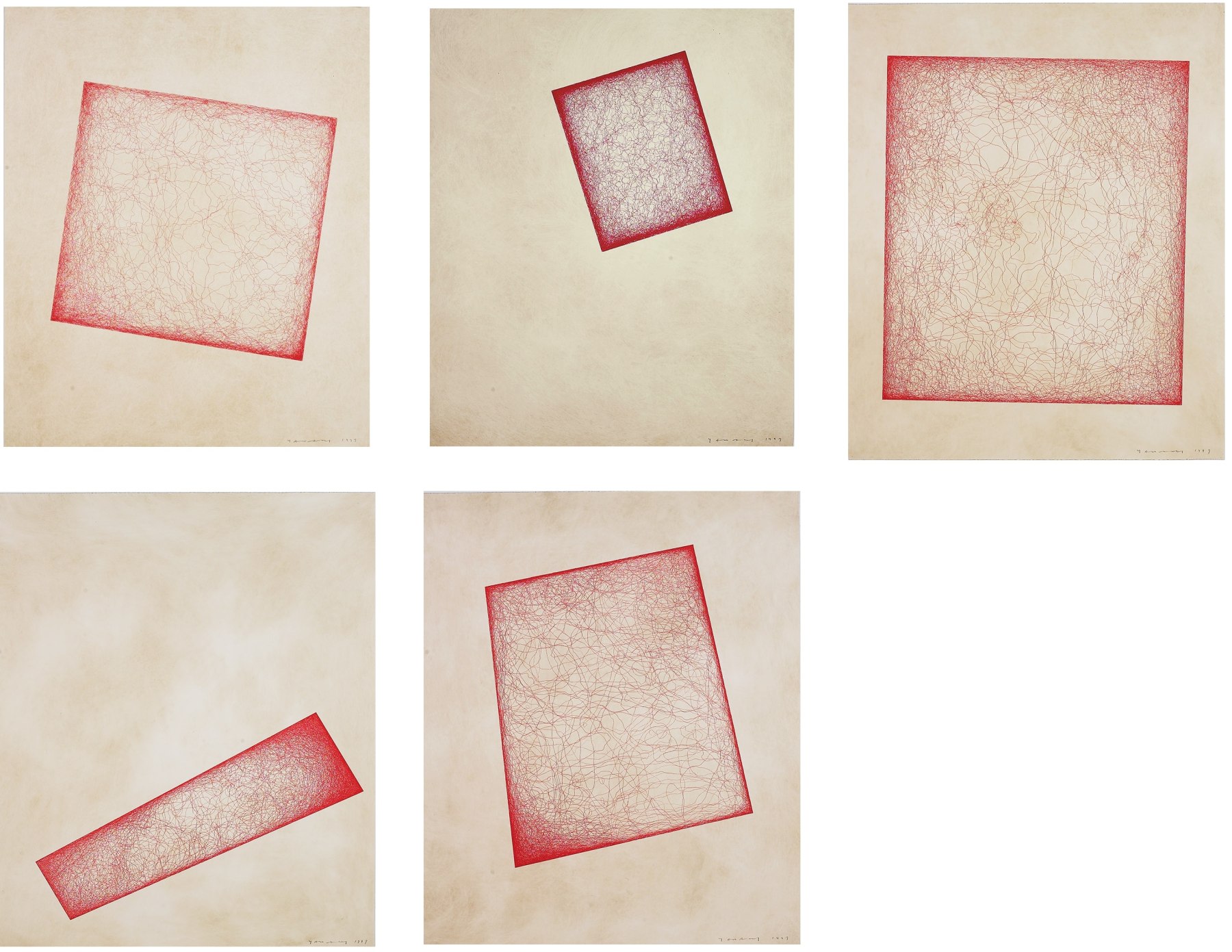
Yukinori Yanagi
Wandering Position, 1997
Portfolio of 5 line etchings
24 x 20 inches (61.5 x 51 cm), each
Edition of 35 + proofs
Inquire
In Wandering Position, Yukinori Yanagi traced the movements of a red ant within a defined area of the printing plate. The work evokes metaphors of urban life and social organization as well as the more troubling realities of entrapment, forced accommodation, and restraint. There is a startling unequal relationship of power between Yanagi and the ant. The artist is in effect totally subjected to laboriously following the decisions of the tiny creature and yet, ultimately, dominated the bounds of their situation. Through this process, the viewer is motivated to look at their own position, and to consider the strategies of social control that exist within our own society.

Robert Zandvliet
Untitled 85, 1999
Monotype
19 x 12 3/4 inches (48.3 x 32.4 cm)
Inquire
“I wanted to paint a waterfall…but it didn’t work out. In a painting, you have to think more clearly. In monotype, you can try it out. When I started painting landscapes they were quieter. Then I wanted to make them more apocalyptic. Now the monotypes are more complex than the paintings. I want to keep the romantic feel of the paintings but make it more abstract. When you make a big painting, you have to be more aware of what you’re doing. You start with lighter colors – yellows – and work to dark. With monotypes, you clean the Mylar surface and get the white of the paper back.”
- Robert Zandvliet
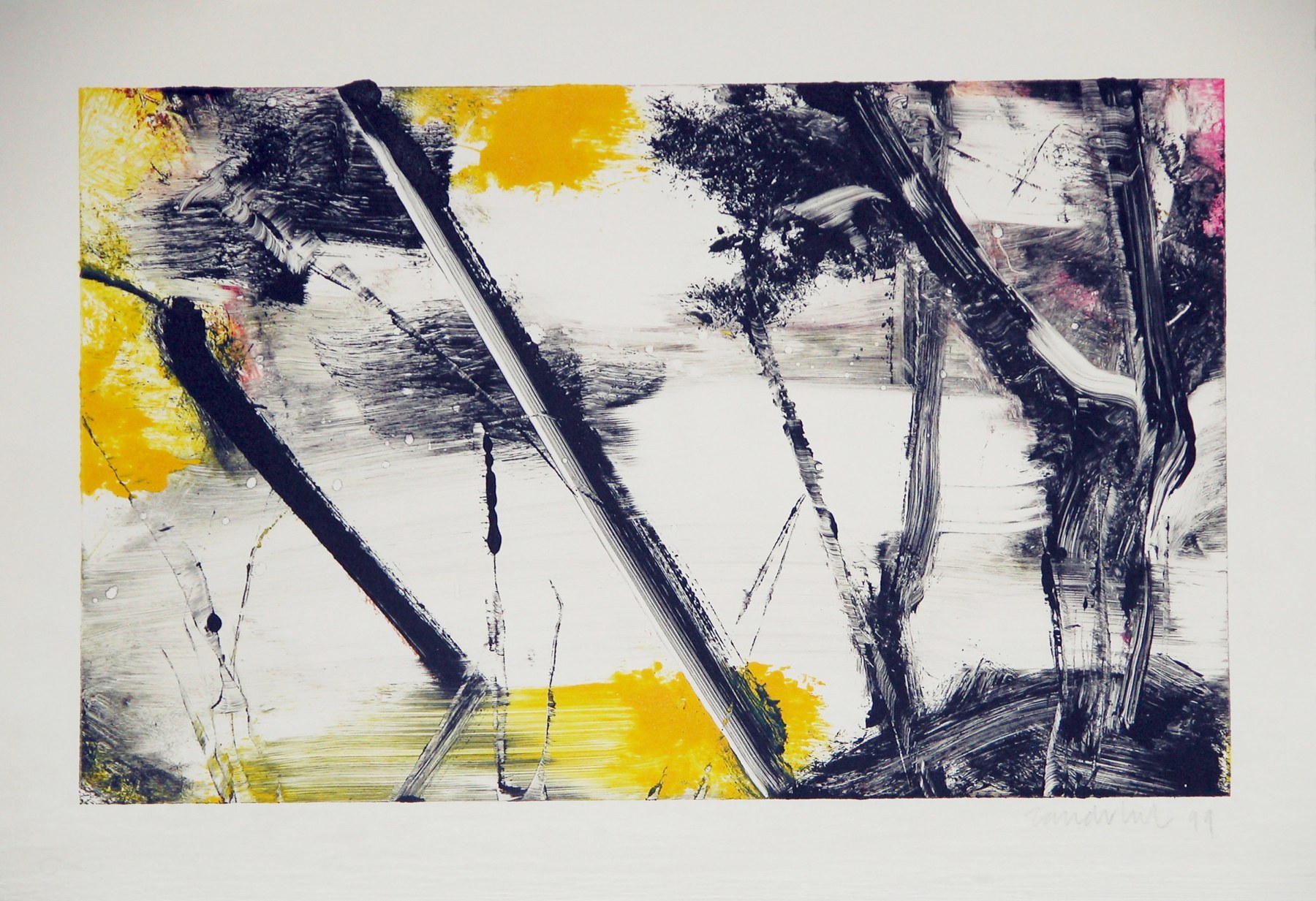
Robert Zandvliet
Untitled 17, 1999
Monotype
13 x 18 1/2 inches (33.0 x 47.0 cm)
Inquire
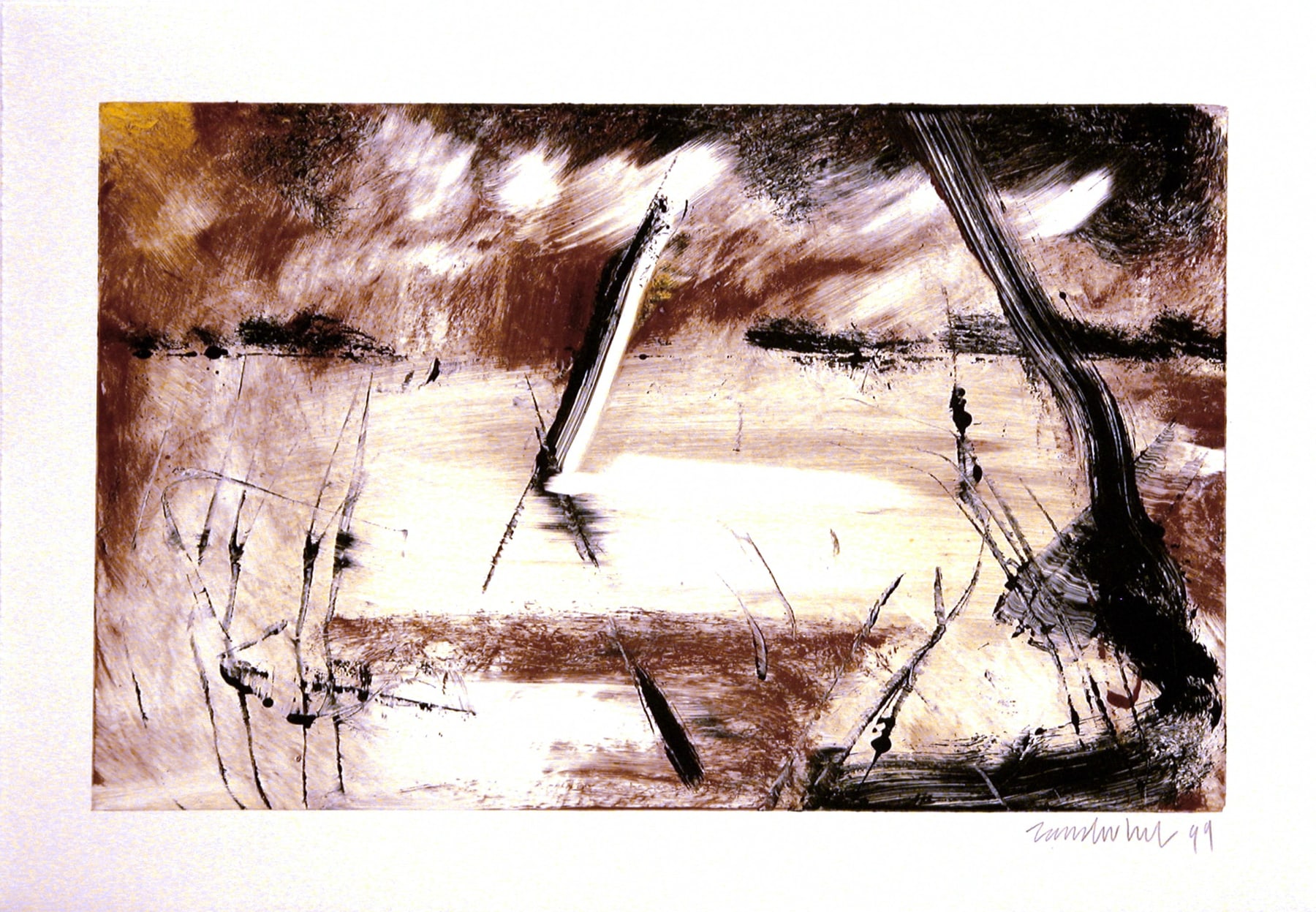
Robert Zandvliet
Untitled 23, 1999
Monotype
13 x 18 1/2 inches (33.0 x 47.0 cm)
Inquire

John Baldessari
Heaven and Hell, 1988
Diptych: aquatint, scraping, roulette, and photo-etching
47 1/4 x 31 1/2 inches (120 x 80 cm), each
Edition of 45 + proofs
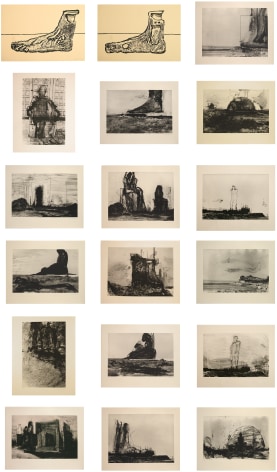
Huma Bhabha
Reconstructions, 2007
Portfolio of 16 photogravures and 2 wood block prints
Photogravures: 29 1/2 x 36 5/8 inches (75 x 93 cm), each
Woodblock prints: 25 3/4 x 34 inches (64.5 x 96.5 cm), each
Edition of 35 + proofs
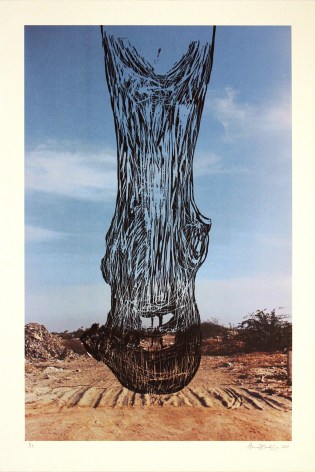
Huma Bhabha
Untitled, 2010
Woodcut over lithograph
38 1/2 x 26 inches (97.8 x 66 cm)
Edition of 25 + proofs
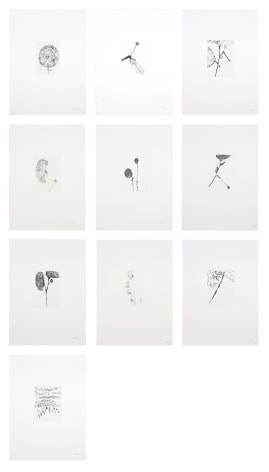
Louise Bourgeois
Etchings for Homely Girl, A Life, 1992
Portfolio of 10 drypoints
21 1/2 x 15 inches (54.61 x 38.1 cm), each
Edition of 44 + proofs
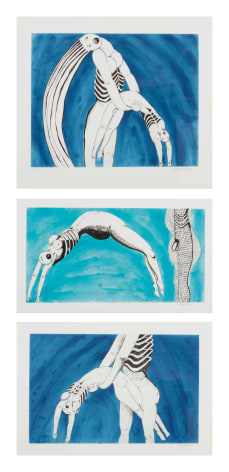
Louise Bourgeois
Triptych for the Red Room, 1994
3 aquatints, drypoints, and engravings
Sheet sizes vary
Edition of 30 + proofs
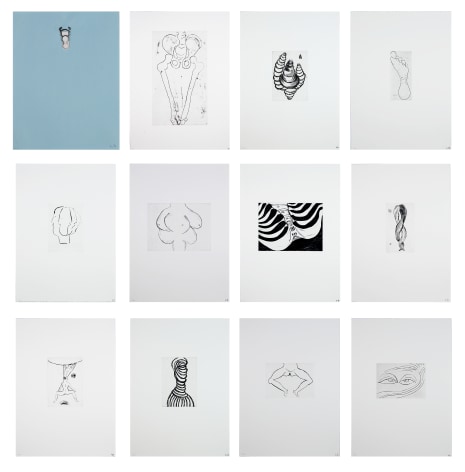
Louise Bourgeois
Anatomy, 1989-90
Portfolio of 11 etchings and drypoints with 1 multiple
19 1/2 x 14 inches (49.53 x 35.56 cm), each
Edition of 44 + proofs
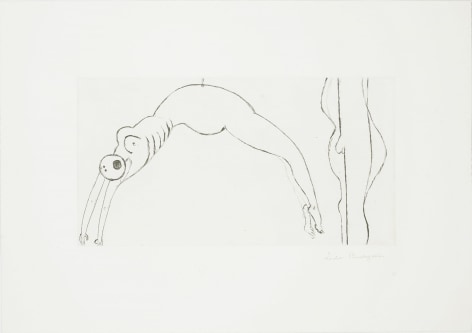
Louise Bourgeois
Arched Figure, 1993
Drypoint
15 5/8 x 22 inches (39.69 x 55.88 cm)
Edition of 50 + proofs

Louise Bourgeois
Champfleurette, the White Cat, 1994
Drypoint, etching, and aquatint
18 1/2 x 25 inches (46.99 x 63.5 cm)
Edition of 22 + proofs

Louise Bourgeois
Dismemberment, 1994
Drypoint and roulette
20 1/2 x 15 inches (52.1 x 38.1 cm)
Edition of 44 + proofs
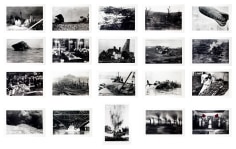
Tacita Dean
The Russian Ending, 2001
Portfolio of 20 photogravure etchings
21 x 31 inches (54 x 79.4 cm), each
Edition of 35 + proofs
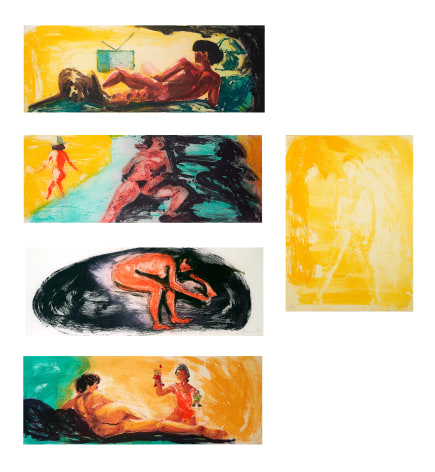
Eric Fischl
Floating Islands, 1985
Portfolio of 5 aquatint, sugar lift, drypoint, and scraping prints
4 prints: 11 x 31 inches (29.5 x 80.5 cm), each; 1 print: 22 x 16 inches (58.4 x 42.5 cm)
Edition of 45 + proofs
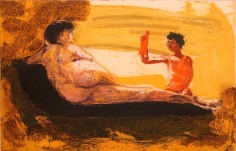
Eric Fischl
Puppet-Tears, 1985
Etching, aquatint, sugar-lift, dry point, and scraping
15 x 12 inches (38 x 31.8 cm)
Edition of 50 + proofs

General Idea
Fear Management, 1987
Portfolio of 8 handpainted silkscreens
33 x 22 inches (83.8 x 55.9 cm), each
Edition of 50 + proofs
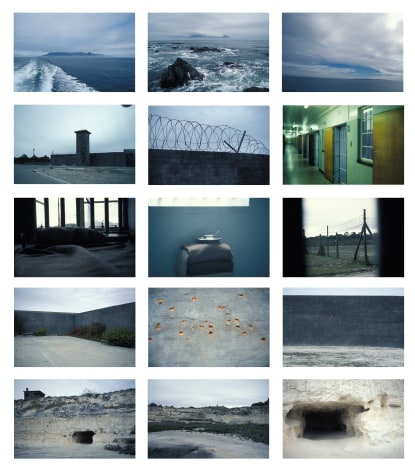
Alfredo Jaar
The Sound of Silence, 2006
Portfolio of 15 pigment prints
20 x 30 inches (50.8 x 76.2 cm), each
Edition of 25 + proofs

Matthew Day Jackson
Bucky (ROYGBV) from The Dymaxion Series, 2007-08
Intaglio (softground and spitbite) and screenprint
23 3/4 x 17 1/2 inches (60.3 x 44.5 cm)
Edition of 35 + proofs
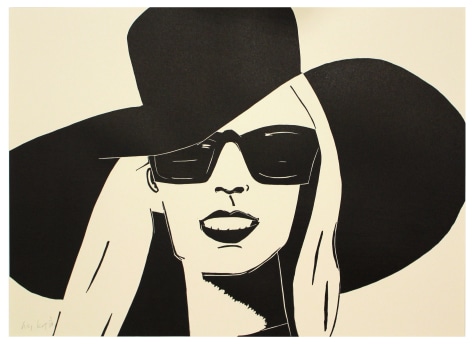
Alex Katz
Nicole, 2011
Woodcut
17 1/8 x 23 3/4 inches (43.5 x 60.3 cm)
Edition of 30 + proofs

Alex Katz
Black Cap (Ada), 2010
Woodcut
17 x 22 1/4 inches (43.2 x 56.5 cm)
Edition of 30 + proofs
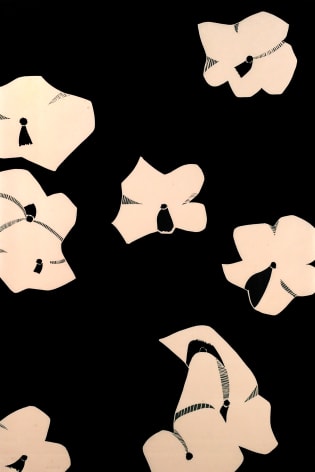
Alex Katz
Impatiens, 2001
Linocut
54 x 36 1/4 inches (137.2 x 92.1 cm)
Edition of 35 + proofs
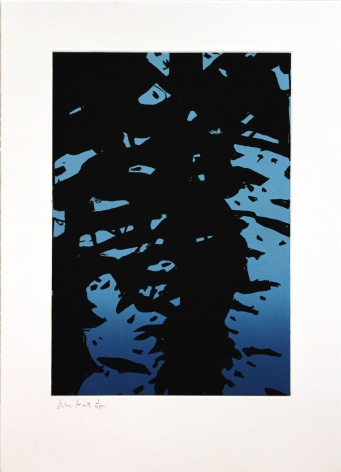
Alex Katz
Reflection I, 2010
Etching
18 1/2 x 13 1/2 inches (47 x 34.3 cm)
Edition of 45 + proofs
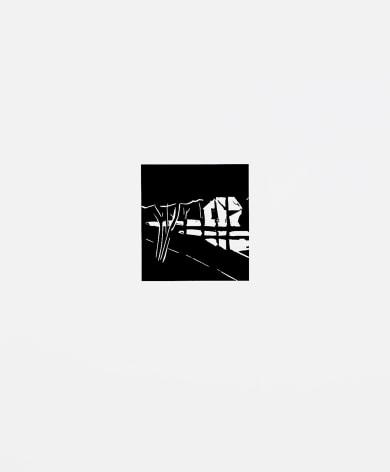
Alex Katz
Untitled (House), 2001
Linocut
16 x 14 inches (42.5 x 35.6 cm)
Edition of 45 + proofs
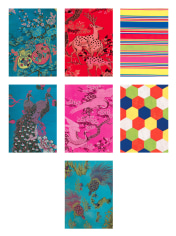
Kimsooja
The Seven Wishes, 2004
Portfolio of 7 Iris prints
45 x 31 1/2 inches (114.3 x 80.01 cm), each
Edition of 20 + proofs
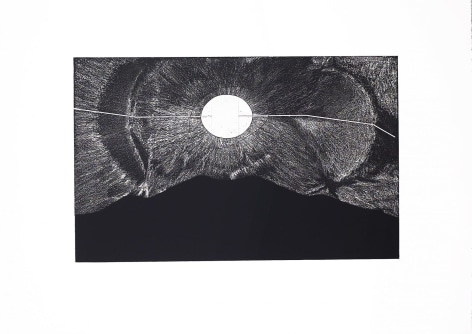
James Turrell
Fumarole from the series Mapping Spaces, 1987
Etching, aquatint, photo-etching, drypoint, and soft-ground
22 x 30 inches (56 x 78 cm)
Edition of 35 + proofs
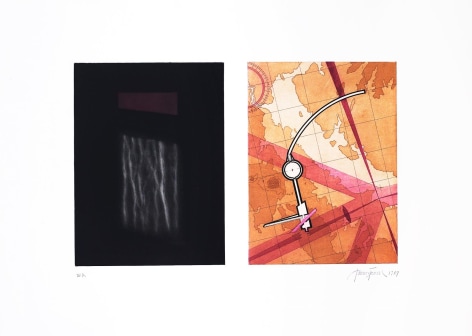
James Turrell
East Chamber from the series Mapping Spaces, 1987
Etching, aquatint, photo-etching, drypoint, and soft-ground
22 x 30 inches (56 x 78 cm)
Edition of 35 + proofs
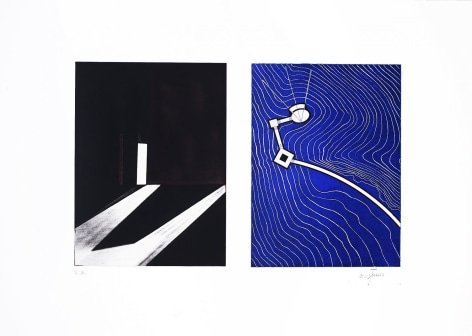
James Turrell
West Chamber from the series Mapping Spaces, 1987
Etching, aquatint, photo-etching, drypoint, and soft-ground
22 x 30 inches (56 x 78 cm)
Edition of 35 + proofs

Yukinori Yanagi
Hinomaru,1991
Portfolio of 5 lithographs in colors and 1 embossed print with collage
33 x 24 inches (84 x 61 cm)
Edition of 35 + proofs
*All works are subject to availability; all prices are subject to change.
© 2020 Blumarts, Inc.